Claims




Listen, listen, and listen some more —and then respond immediately




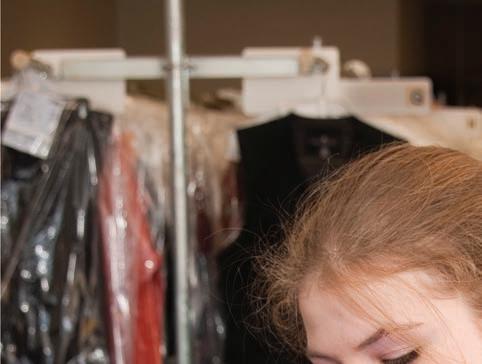
© Copyright 2014 American Trade Magazines All rights reserved. ®
June 2014 Customer


Maineline Computer Systems 1-800-354-2525 www.compassmax.com Emailing so advanced, it's simple. • Customer Service Manager • Unlimited Price List Options • Automated Email Marketing • True Touch Screen or Keyboard Interface • Credit Card Integration • Accounts Receivable • Multiple Auto Assembly Integration Options • Cash and Inventory Control • Customer Loyalty Programs • CSR Alerts • Pick Up and Delivery • Multi Store Capabilities Is your business heading in the right direction? Dynamic Emailing: Compassmax can create unlimited user defined automatic emails with HTML graphics. Options include new customer emails, lost customers emails, notifications when orders are ready, garment pictures, birthdays or anniversaries wishes and more!
When dealing with laundry stains, your reputation rides on getting the outstanding results The Laundry Two deliver. RiteGo® laundry spray spotter quickly penetrates to absorb collar & cuff stains, perspiration, ground-in soil and more, all without brushing. Turn to Laundry TarGo® to remove any tough oil based stains that remain behind.
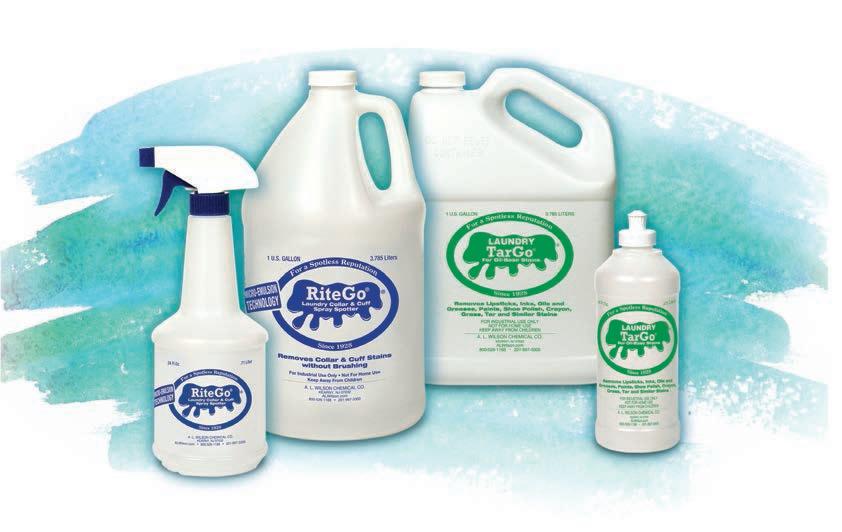
Use The Laundry Two with confidence on shirts, wedding gowns... anything you're washing or wetcleaning.
Both Laundry TarGo and RiteGo are chlorinated-solvent free, biodegradable, noncombustible and California 2013 VOC and Prop-65 compliant.
Use them to deliver stain-free laundry and wetcleaning. You'll build your reputation for quality - which is what keeps customers coming back.
FROM COLLARS AND CUFFS THE LAUNDRY T WO ™ ARE RIGHT FOR YOU! TO THE REALLY TOUGH STUFF... FROM COLLARS AND CUFFS THE LAUNDRY T WO ™ ARE RIGHT FOR YOU! TO THE REALLY TOUGH STUFF... To learn more, visit ALWilson.com or call 800-526-1188 A. L. WILSON CHEMICAL CO. Become a STAIN WIZARD at ALWilson.com
drycleaner
June 2014 Vol. 81, No. 3
DEPARTMENTS
14 Customer Claims
Each claim is unique, but every claim can be addressed with a system of guidelines that can direct your team to a reasonable accommodation for the customer.

Diana Vollmer
28

Attitude Check
Every business has some employees who tend to look on the dark side of things, and even the sunniest workers have bad days. Act fast to turn negative workers into positive performers.
Phillip M. Perry
36
Plant Leasing Tips ... and Traps to Avoid

Look before you lease—it’s all subject to negotiation.
Lloyd R. Manning
2 American Drycleaner, June 2014 www.americandrycleaner.com
AMERICAN AMERICAN
Pre-Inspection 4 Talk of The Trade 6 The Numbers 10 Upcoming Events 12 Other Side of the Counter 22 The Best Kept Secret Carolyn Nankervis Spotting Tips 25 Lot of Little Things Martin Young Energy Report 34 Hits the Spot Jimmy Barry Jr. Industry Observations 44 Spot-Check Your Counter Staff Howard Scott Education & Training Calendar 48 Product News 50 Your Money 52 The Beauty of Dividends Bill Lynott Around the Industry 54 Classified Advertising 58 Advertiser Index 62 Wrinkle in Time 64 FEATURES (Cover Photo: ©iStockphoto/toddmedia)
Code
help in
14
NEED HELP FINDING THE HIDDEN HANGER? Scan this QR
for
finding the hidden hanger on this month’s cover. Good luck!
“Business has never been better.”
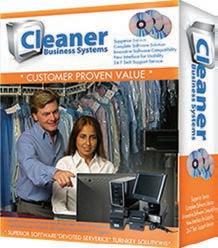

































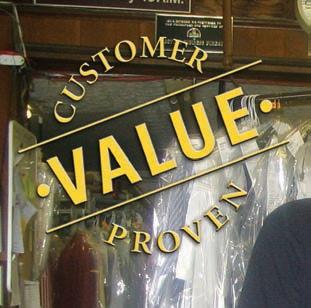
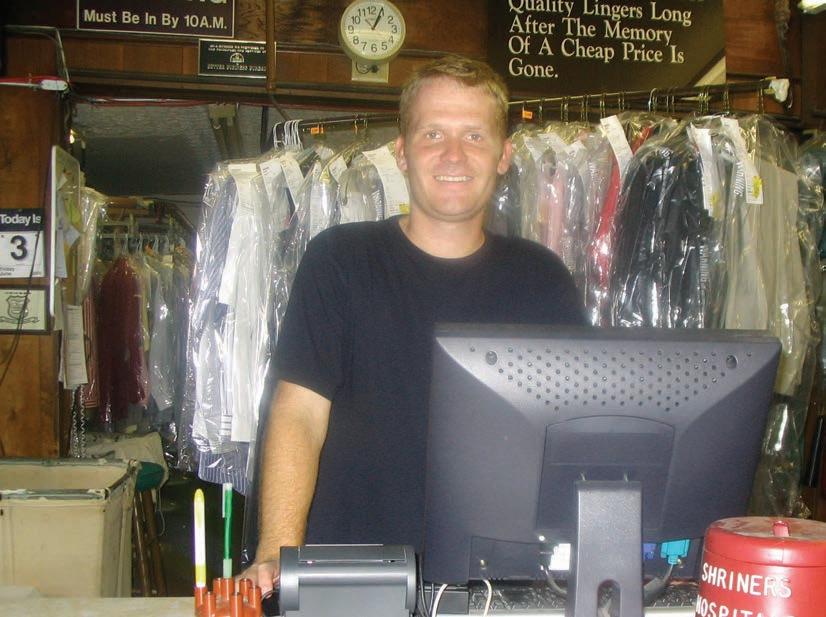
“We’re moving faster. We’re moving better. We’re moving more efficiently. That means profitability”





























800.406.9649 sales@cleanerbusiness.com www.cleanerbusiness.com We Speak Cleaner
PhilLandauer, OwnerofPierceCleaners
PRE-INS P ECTION
Hear Me O ut
As much as you and I may want it, no one, and no one’s business, is perfect. We’re all human, and we all make mistakes.
Bruce Beggs
Amongst the work that a typical dry cleaner is called on to return to like-new con dition, a share will fall victim to human error of some kind. But while the percentage of lost or damaged items may be small, the garment’s owner doesn’t consider his or her item to be expendable.
My wife, a talented seamstress, created her wedding dress. She didn’t
Publisher Charles Thompson 312-361-1680 cthompson@american trademagazines.com
Editorial Director Bruce Beggs 312-361-1683 bbeggs@american trademagazines.com
Production Manager
Roger Napiwocki
National Sales Director Donald Feinstein 312-361-1682 dfeinstein@american trademagazines.com
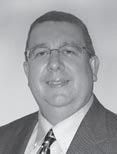
Digital Media Director Nathan Frerichs 312-361-1681 nfrerichs@american trademagazines.com Main: 312-361-1700 Fax: 312-361-1685

see it as an acceptable loss when it came back with grease-like stains it didn’t have before dry cleaning. I wasn’t present for her conversation at the counter but I’m sure Sandy elo quently expressed her desire to have her one-of-a-kind dress cleaned prop erly days before our ceremony. (It was, and Sandy and I are celebrating our 23rd anniversary this month.)
This month, columnist Diana Vollmer breaks down the dynamic of customer claims and how important it is to hear out an unhappy customer and act quickly to accommodate them. Listening to a customer’s woe won’t automatically satisfy them but it’ll pave the way for you to do so. O
American Drycleaner (ISSN 0002-8258) is published monthly except Nov/Dec combined. Subscription prices, payment in advance: U.S., 1 year $39.00; 2 years $73.00. Foreign, 1 year $89.00; 2 years $166.00. Single copies $7.00 for U.S., $14.00 for all other countries. Published by American Trade Magazines LLC, 566 West Lake Street, Suite 420, Chicago, IL 60661. Periodicals postage paid at Chicago, IL and at additional mailing offices.
POSTMASTER, Send changes of address and form 3579 to American Drycleaner, Subscription Dept., 440 Quadrangle Drive, Suite E, Bolingbrook, IL 60440. Volume 81, number 3. Editorial, executive and advertis ing offices are at 566 West Lake Street, Suite 420, Chicago, IL 60661. Charles Thompson, President and Publisher. American Drycleaner is distributed selectively to: qualified dry cleaning plants and distributors in the United States. No material appearing in American Drycleaner may be reprinted without written permission. The publisher reserves the right to reject any advertising for any reason. © Copyright AMERICAN TRADE MAGA ZINES LLC, 2014. Printed in U.S.A.
American Drycleaner, June 2014 www.americandrycleaner.com

4
Contributing Editors Howard Kaschyk Carolyn Nankervis Howard Scott John Spomar Jr. Jean Teller Diana Vollmer Martin Young Editorial Assistant Carlo Calma SUBSCRIPTIONS 630-739-0900 x100 www.american drycleaner.com
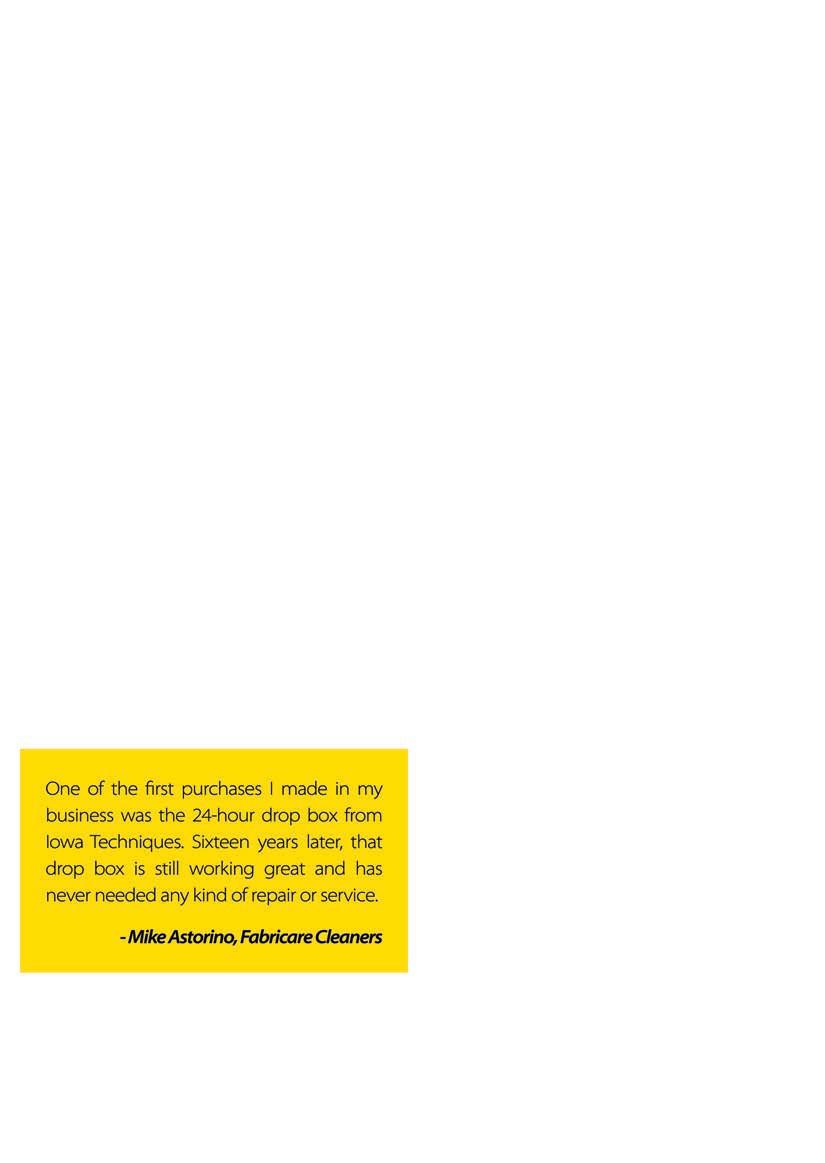

Survey: Majority of dry cleaners ‘immersed’ in wetcleaning process
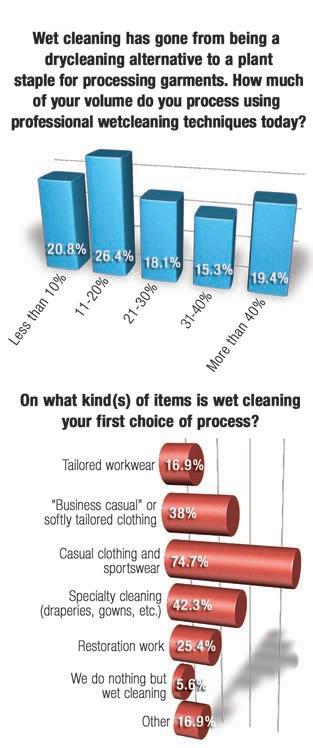
CHICAGO — More and more dry cleaners are using professional wetcleaning techniques in their plants, with the majority (26.4%) saying they use the process on as much as 20% of the volume they clean, according to results from May’s American Drycleaner Your Views survey.
Roughly 19% of respondents say they use wet cleaning on more than 40% of their plant’s volume. Approximately 18% use it on 21-30% of garments they process, and 15.3% use it on 31-40% of garments. Close to 21% say they wet clean “less than 10%” of their overall volume.
Wet cleaning has become the go-to process for dry cleaners when cleaning casual clothing and sportswear (74.7% of respondents use the process for this category); specialty items, like draperies and gowns (42.3%); “business casual” or softly tailored clothing (38%); restoration work (25.4%); and tailored workwear (16.9%).
Roughly 6% of respondents say they do “nothing but wet cleaning,” while 16.9% listed “other” items they primarily wet clean, such as polyester suits, down comforters and “items with heavy water-soluble stains.”
Utilizing wetcleaning techniques is not easy on all types of fabrics. Cashmere, silk, rayon and wool present
6
www.americandrycleaner.com TALK OF THE TRADE ▲
American Drycleaner, June 2014



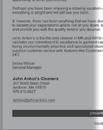
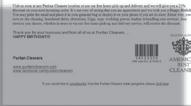
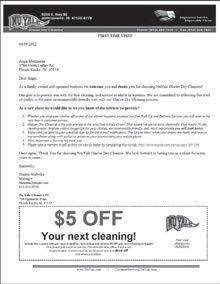
some difficulty when doing so, according to the dry cleaners polled.
“We tend to only dry clean [silk and wool] as we have a drycleaning machine, and they require less work this way,” says one respondent.
“Wool and the mix textiles [are difficult to process because] the texture or feel of fabrics change,” says another. “Wear and tear are accelerated since water is [harsher] on fabrics.”
“As the state of Illinois has a solvent tax and license fee, using less solvent is es sential,” says one dry cleaner. “Also, water is included in my lease [so] wet cleaning saves my business money.”
Others echo this sentiment, lauding the benefits of the process.
“Wet cleaning has reduced our costs as we purchase less solvent, less filters and all other costs associated with dry cleaning,” a respondent says.
While some respondents say they strict ly process garments through wetcleaning techniques, others countered by saying that it should only be used as an alternative. “I do not believe that wet cleaning is the best method for all garments,” one says. “Some fabrics and fibers need to be dry cleaned.”
While American Drycleaner’s Your Views survey presents a snapshot of the trade audience’s viewpoints, it should not be considered scientific. Due to rounding, percentages may not add up to 100%.
Subscribers to American Drycleaner emails are invited each month to participate in a brief industry survey they can complete anonymously. The entire trade audience is encouraged to participate, as a greater number of responses will help to better de fine owner/operator opinions and industry trends. O
Topstories@www.AmericanDrycleaner.com forthe30daysendingMay15
TOP NEWS STORIES
1. With New Charlotte Location, Tide Dry Cleaners Opens 20th Store 2. DLI Helps Cleaners Focus on Positives Following ABC News Coverage 3. EXPOdetergo Reports 85% of Exhibit Space Already Booked
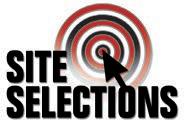
TOP
American Drycleaner, June 2014 www.americandrycleaner.com
8
2.
3.
TOP COLUMNS & FEATURES 1. Ten Things Your Lawyer May Not Tell You
One Dry Cleaner’s Off-Main-Street Thinking
Changes in Repair-or-Replace Tax Rules 4. Market Positioning: Winning the Battle for Your Customer’s Mind 5. StatShot: West Leads in March, FirstQuarter Drycleaning Sales... WEB EXCLUSIVE!
STORIES @ OUR SISTER SITES
2.
3.
www.AmericanCoinOp.com: 1. CLA Finalizes Schedule for Excellence in Laundry Conference WEB EXCLUSIVE!
Laundromats in the Digital Age
U.S. Mint Requests Stakeholders Comment on Changing Coinage
2.
3.
www.AmericanLaundryNews.com: 1. OPL 101: The Benefits of Using Multi-Par Linen System
Choosing Wash Formulas
Staying ‘On Par’ Presents Ongoing Challenge
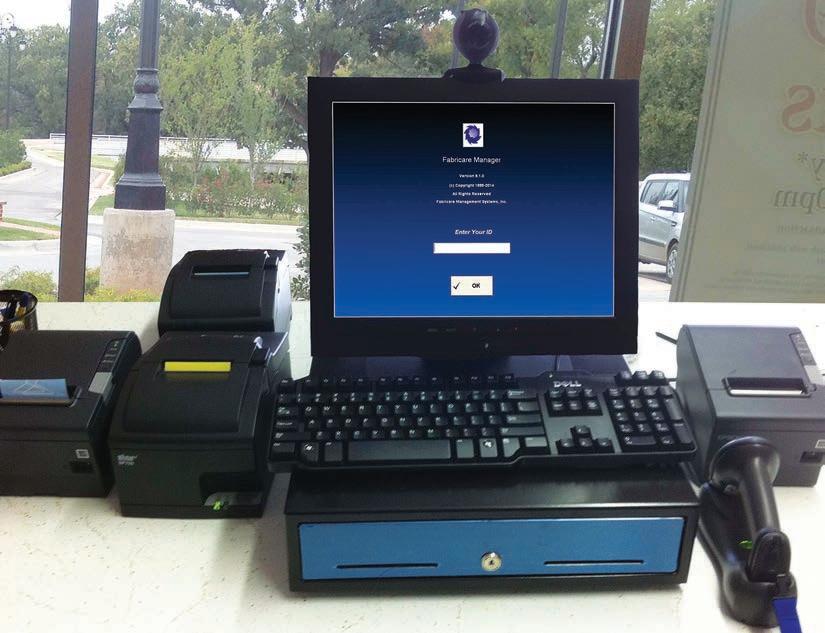

fabricaremanager.com • 888.249.5142 Drycleaning Management at Your Fingertips Fabricare Manager Not satis ed with your point of sale computer hardware and software? Move to Fabricare Manager’s a ordable, reliable and secure system. You (and your customers) will be happy you did. Just tell us you’re ready to make the change. Or, If you’re not yet using a POS, why not start with the best? Time to Switch? Come see us at the SDLS, June 20–22, in Jacksonville • Booth # 215
THE NUMBERS
APRIL 2014 SHOWED an unexpected upswing with 288,000 jobs added to the U.S. economy, dropping the unemployment rate to 6.3%. After several months of static figures, the number of unemployed dropped by 733,000, the U.S. Bureau of Labor reports. The yearly numbers show a 1.9 million decrease in those people classified as unemployed.
THE APRIL BEIGE BOOK from the Federal Reserve Districts’ Board of Governors reported increased economic growth across most of the nation. The increases were due mainly to an upswing in consumer spending as the weather improved and foot traffic increased.
The Institute for Supply Management also reported increased economic activity, with manufacturing expanding in April for the 11th straight month. Supply executives reported that overall economic growth was up for the 59th consecutive month. Says Bradley Holcomb, chair of the ISM Manufacturing Business
Survey Committee, “The April PMI registered 54.9%, an increase of 1.2 percentage points from March’s reading of 53.7%.”
Secretary of Commerce Penny Pritzker commented in an early May statement that U.S. exports rose to $193.9 billion in March, an increase of $3.9 billion over February. First-quarter figures total $576.3 billion.
THE NATIONAL ASSOCIATION OF REALTORS, despite lower-than-expected activity in the housing market, predicts sales of existing homes to increase in 2015. The market saw a 9% increase in 2013, to nearly 5.1 million homes sold. The past six months have seen the numbers remain static, but the NAR sees a slight decrease of 3% for the rest of 2014—to about 4.9 million homes sold—and projects an upswing to 5.2 million homes sold in 2015.
RealtyTrac’s statistics show the number of properties in foreclosure was down by 1% from March, and down 20% from April 2013.
CONSUMER CONFIDENCE improved in April, according to the Surveys of Consumers by Thomson Reuters and the University of Michigan, to its highest level since 2007. Consumers have a more positive outlook on their current financial picture as well as renewed optimism about the country’s economy.
“The most important issue is whether consumers will show greater resistance to the backslides that have repeatedly occurred in the past few years,” says Richard Curtin, Surveys of Consumers chief economist. “While near-term expectations have improved substantially, longer-term expectations for personal finances as well as the overall economy have remained unchanged from a year ago.
“Hopefully, as the pace of economic growth springs ahead in the coming months, the main beneficiary will be an improvement in long-term economic expectations for personal finances as well as the overall economy.” O
—Jean Teller
10 American
www.americandrycleaner.com
Drycleaner, June 2014
Our new generation of Point Of Sale system is designed for both small and larger cleaner stores. DryClean PRO Enterprise (DCPe) is even simpler to use than before. With user friendly screens and menus, DCPe will make your life easy. We offer, promise, and guarantee the best after sales support to our end users.

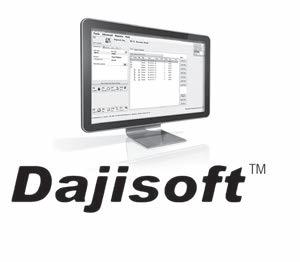
Save time and money and add to your profits by contacting existing clients and reaching out to new clients through DryClean PRO Enterprise’s built in MARKETING and EMAILING functionality. You’ll be able to send Thank You emails to new or Top 100 customers, Customers with overdue inventory, Customers that have not visited you for a while, Route customers & e-mail coupons to all your customers.
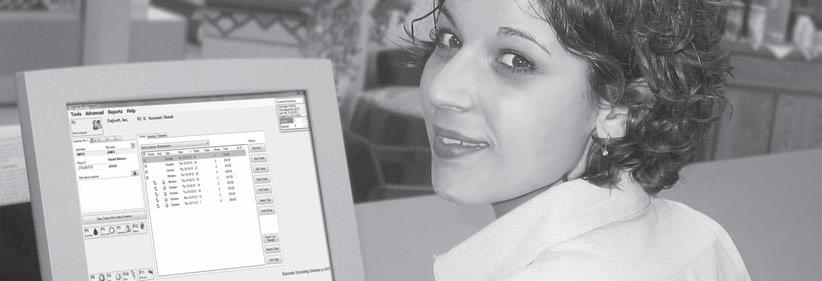


Call us about our new version of Uniform Tracker



Computer Systems (888) 325-4763 www.dajisoft.com
THINK OUTSIDE YOUR SYSTEM WITH Free cordless scanner with our Garment Verification System Contact us TODAY! LIMITED TIME OFFER Ask us about our DCPe RENTAL
T his month’s S EF A show to feature 125-plus booths
The South Eastern Fabricare Association’s Southern DryCleaners and Launderers Show, coming up on June 20-22 in Jack sonville, Fla., will feature more than 125 exhibitor booths repre senting more than 70 companies, show organizers report.
Admission to the exhibit hall at the Prime F. Osborn III Convention Center is free this year.
A cocktail reception and special preview will kick off the event at 6 p.m. Friday, June 20. Earlier that day, Christopher White, executive director of America’s Best Clean ers, will present a special educa tional program, Capitalizing on Human Interaction, at the Hyatt Regency Riverfront hotel.
The session will emphasize how cleaners can build a profitable brand through strong human inter actions in all aspects of their busi ness.
Several other seminars are planned at the convention center on Saturday and Sunday, June 21-22. Visit www.sefa.org for more de tails and/or to register for the show. Event information is also available by calling 215-830-8467. O
C AL E NDAR
June 6-7 Ontario Fabricare Association & Eastern Canadian Launderers & Dry Clean ers Association Convention. To be held in Toronto, Ont. Call 416-733-2111.
June 11 North East Fabricare Association Brad Friel Memorial Clean Classic. To be held in Sutton, Mass. Call 800-442-6848.
June 20 Drycleaning & Laundry Institute Annual Membership Meeting. To be held in Jacksonville, Fla. Call 800-638-2627.
June 20-22 South Eastern Fabricare As sociation Southern Drycleaners and Laun derers Show. To be held in Jacksonville, Fla. Call 215-830-8467.
June 25-26 Wisconsin Fabricare Institute Annual Convention. To be held in Mequon, Wis. Call 414-529-4707.
July 25-26 Michigan Institute of Launder ing & Drycleaning Summer Convention. To be held in Gaylord, Mich. Call 877-3906453.
August 22-24 California Cleaners As sociation Fabricare 2014 trade show and convention. To be held in Long Beach, Calif. Call 916-239-4070.
Oct. 3-6 EXPOdetergo Intl. To be held in Milan, Italy. Visit www.expodetergo.com.
Oct. 18-19 Pennsylvania and Delaware Cleaners Association Drycleaning & Laun dry EXPO. To be held in Atlantic City, N.J. Call 215-830-8495.
April 16-19, 2015 Clean Show. To be held in Atlanta. Visit www.cleanshow.com. O
Post notices of your organization’s events on www.AmericanDrycleaner.com
American Drycleaner, June 2014 www.americandrycleaner.com
12
UPCOMING EV E NTS
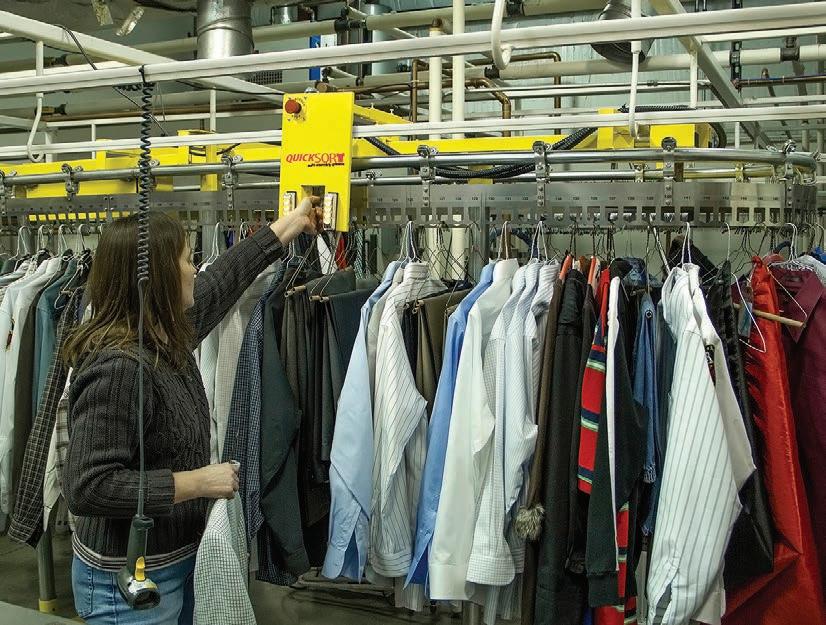

QUICKSOR ? QUICKSOR auto-assembly systems WHY ASSEMBLE ANY OTHER WAY? Call Brett at 501-216-8093 Why assemble ANY OTHER WAY when you can Our customers RAVE about our: - 24/7 customer support - Simple to use system - AFFORDABILITY! - Easy installation (your store wont miss a beat) We are confident that QuickSort is the most efficient assembly system on the market! www.quicksortAC.com brett@quicksortAC.com
Customer Claims


 By Diana Vollmer
By Diana Vollmer
Despite the generally low claim rates in the fabricare industry, customer claims seem to be one of the favorite topics of discussion for cleaners, thereby capturing a disproportionate share of business-focused conversations. Everyone has a horror story about their most outrageous customer demand or their most expensive customer claim.


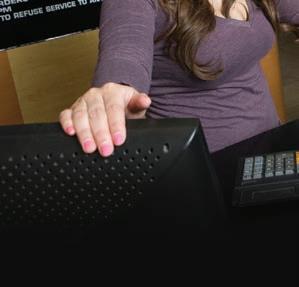

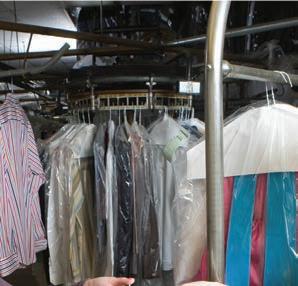
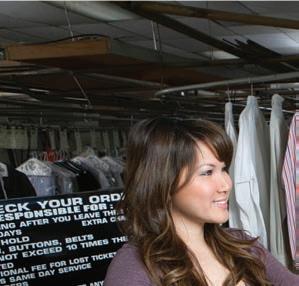
CUSTOMERS ARE SINCERE IN BELIEVING THEIR CLAIM TO BE VALID. With the exception of a few individuals that are


perpetually trying to get something for nothing, generally customers are sincere in their belief that their claims are legitimate. They truly do think that they are correct in making a claim. They are simply too busy to take precious time to complain for their own amusement or to torment you.
CUSTOMERS WANT TO BE HEARD. Since the claimant truly does believe they have a valid claim, their primary goal is to be heard. They want you to acknowledge ▲

14 American Drycleaner, June 2014 www.americandrycleaner.com
Listen, listen, and listen some more—and then respond immediately
(Photo: ©iStockphoto/IPGGutenbergUKLtd)
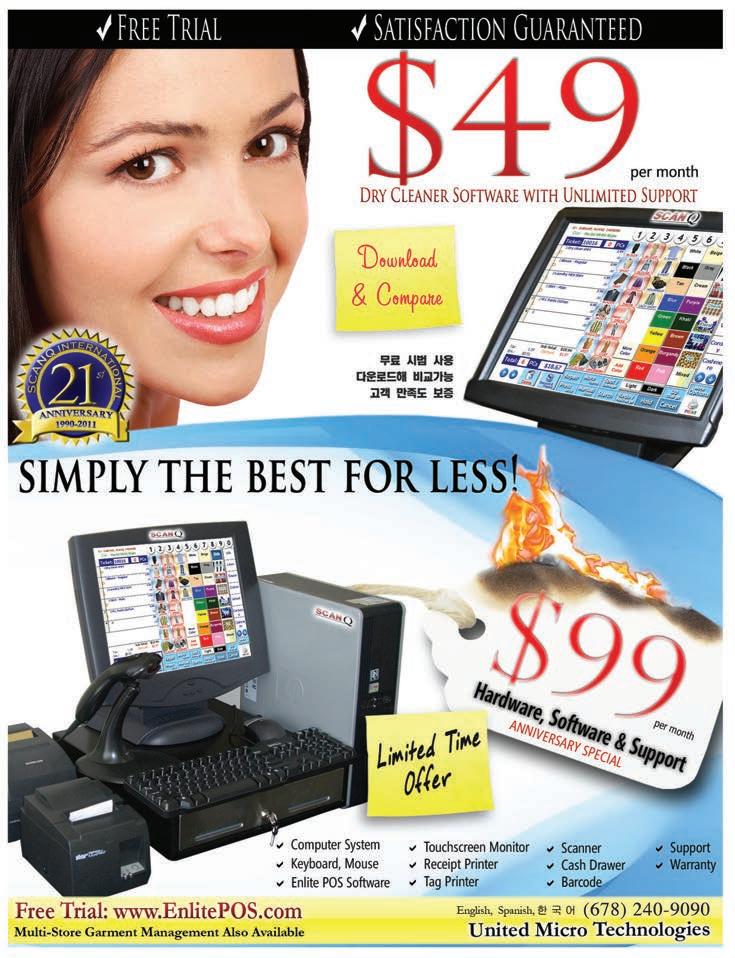
See us at Cleaners Showcase Booth 500 Visit us at SEFA, Booth 121
their grievance and listen to their reason(s) for be ing unhappy with the work that was done on their behalf.
LISTEN CAREFULLY AND THEN LISTEN SOME MORE. Let them tell their story, and listen intently while they make their case for the legitimacy of the claim. Empathetic listening is the best way to take control of a potentially volatile situation and keep it from escalating.
Let them talk themselves out before re sponding, and always be attentive to not only the words they use but also to the attitude and body language. Hear them out and let them wind down. Once they have told their entire story, most customers are reasonable and can be guided toward a reasonable outcome.
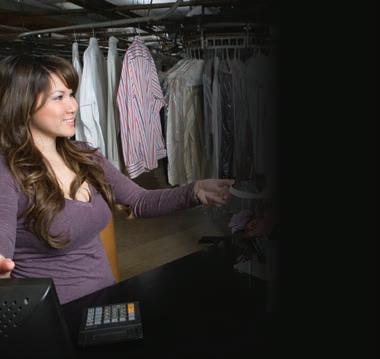
RESPOND WITH AN APOLOGY. Although an apology might sound like a surrender, it is a good first step in regaining the customer’s confidence in your professionalism.
Even if you are confident that no mistake was made, you can still sincerely say that you are sorry for their disappointment or un happiness with their experience. In fact, you are sorry that they are dissatisfied. That does not mean you are taking responsibility for the claim, but it allows you to sympathize with their situation and acknowledge that you did listen to them and their concerns. When an apology is appropriate, it is occasionally enough to appease the unhappy customer because they just wanted to be heard.
According to NOP research, “Thirty-five
Let the customer tell their story, and listen intently while they make their case for the legitimacy of the claim.
Empathetic listening is the best way to take control of a potentially volatile situation...
percent said that a simple apology would have pre vented them from moving to the competition.”
MISTAKES HAPPEN – OWN UP TO THEM. Despite best efforts and multiple check points, sometimes mistakes happen. Usually these mistakes will be addressed before the item reaches the customer. If, in fact, a dam aged article did reach the customer without an explanation or notice of prior damage, the internal process did fail and you owe the customer an apology at the very least.
You also owe them a thank-you for bring ing the claim to your attention so you can address it now and so you can avoid similar failures in the system in the future as well. According to Lee Resource Inc., “for every customer who bothers to complain, 26 other customers remain silent.” They vote with their feet by walking away to the competition.
If, in fact, the damage was the result of a mistake during processing, accept respon sibility and make it right. This might be accomplished by a re-do, a repair, a replace ment or another accommodation.
ACCOMMODATING THE UNHAPPY CUSTOMER.
Each claim is unique, but every claim can be addressed with a system of guidelines that can direct your team to a reasonable accommodation.
Don’t set policy based on the lowest common denominator using the standard of the customer claim that made your blood boil because it was unjustified. Set policies
16 American Drycleaner, June 2014 www.americandrycleaner.com ▲

based on the perception of the majority of your loyal and realistic clients.
THE EARLIEST SOLUTION IS ALMOST ALWAYS THE LEAST EXPENSIVE. Retailers have found repeatedly that the earlier a claim is ad dressed, the less expensive it is to arrive at a satisfactory solution for the customer and the company.
The longer the customer has to wait for an accommodation, the more “valuable” both the item and their time become in their minds. They also have additional time to tell their story outside the company and get more feedback and suggestions from friends and family as to what is “fair.”
Additional external input will only work against you, so settle early as a form of selfdefense. Get the issue resolved so you can retain the customer and so you can move on to more important projects.
ALWAYS THEIR ‘FAVORITE.’ The longer the delay of resolution the more precious, sen timental and valued the item becomes. The damaged blouse becomes their favorite blouse or the tablecloth becomes an irre placeable, priceless heirloom with incalcu lable sentimental value.
“Ninety-five percent of complaining cus tomers will do business with you again if you resolve the complaint instantly,” according to Lee Resource Inc.
EDUCATE YOUR TEAM. Active listening is an acquired skill that can be greatly enhanced with training and practice. The normal hu man reaction to criticism is defensiveness, which leads to escalation of a problem if the customer is interrupted in their explanation of the claim issues.
Training your team to actively and
empathetically listen until the customer has finished talking will improve the customer satisfaction and retention rate as well as re duce the cost of addressing claims.
Practice and role playing will demon strate to your salespeople the improved out comes when they control the situation calmly and let the customer agitation diffuse.
Educating them on the statistics will also show the importance and value of empathetic listening.
According to Michael Leboeuf, in How to Win Customers and Keep Them for Life, of the customers who leave a business: “68% quit because of indifferent attitude towards the customer by the staff.”
Of those customers who leave, only “14% are dissatisfied with the product. 9% leave because of competitive reasons.”
Active listening will reverse the custom ers’ impression of indifference projected by the staff.
EMPOWER YOUR TEAM. Many owners are con cerned that if the sales team has the authority to address customer claims on the spot that they will “give away the store.” In fact, his torical data shows that employees are likely to be much more protective of the company and your funds than you are.
Statistics show that a manager/owner with the facts of the claim in hand will be far more generous to the customer than the customer sales representative would be in handling a claim. You will generally have to encourage them toward a higher value solution.
Since the customer will be happy with less on an immediate resolution, and since the sales rep is likely to offer less if given the immediate authority, it is to the company’s advantage to empower the team to settle claims immediately.
18 American Drycleaner, June 2014 www.americandrycleaner.com ▲
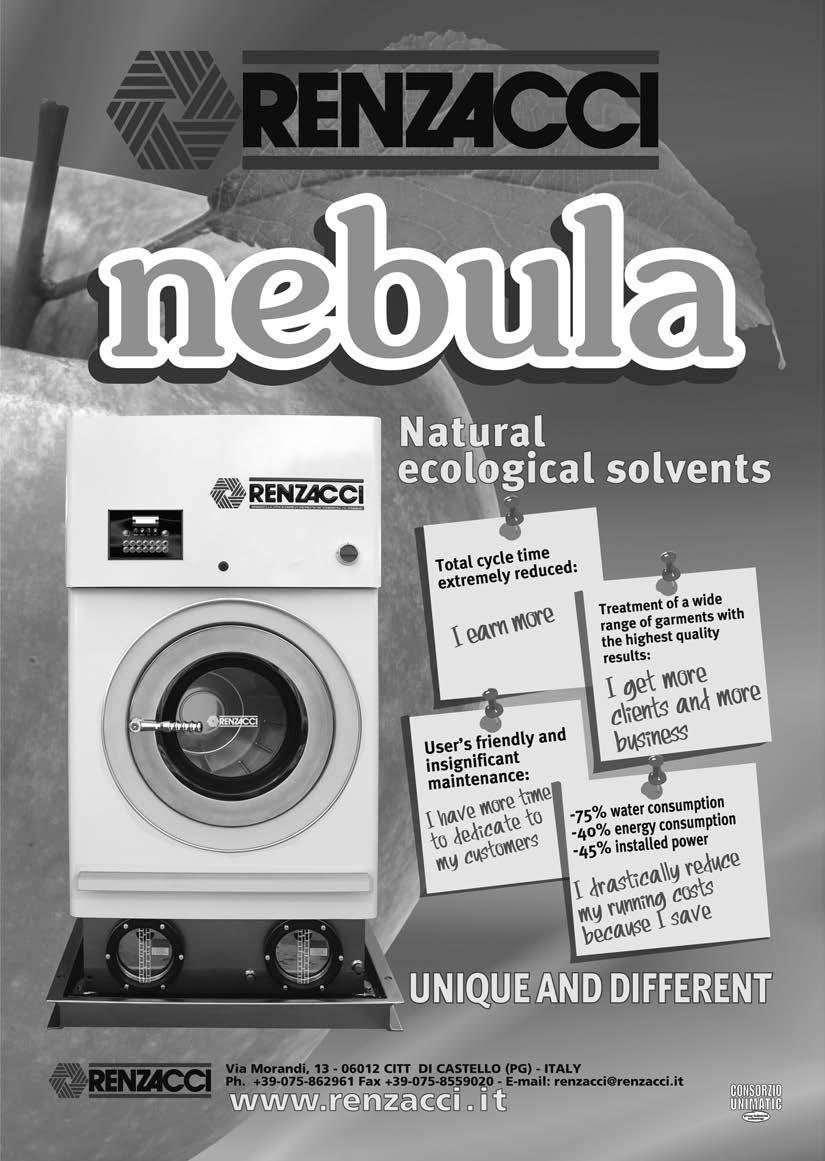
To work up to a comfort level with this process, you may want to ease into this sys tem by authorizing a maximum amount to resolve a claim immediately. For example, if you set that limit at $50, it will always cost you less than getting involved yourself because your lost time alone will be worth more than that $50. You will also retain more customers because their concerns were ad dressed by the person they first encountered.
The customer’s confidence in your coun ter staff will be enhanced because they see that the team with whom they interact regu larly also has knowledge and authority. The staff’s self-confidence will also improve, and members will be more comfortable and com petent in dealing with unhappy customers themselves instead of passing the problems up the line of management.
SATISFIED CUSTOMERS ARE GOOD FOR BUSINESS. According to NOP, satisfying custom ers at the earliest point is good business and necessary to offset human nature of sharing bad experiences with many people and good experiences with very few.
• A dissatisfied customer will tell 9-15 people about it. And approximately 13% of your dissatisfied customers will tell more than 20 people about their problem.
• Happy customers who have their prob lems resolved will tell four to six people about their positive experience.
• Reducing customer defections can boost profits by 25-85%.
• In 73% of cases, the organization made no attempt to persuade dissatisfied customers to stay.
WHEN DELAY IS NECESSARY. If a claim is large (insert your definition of “large”), it may be
necessary to delay a solution, but keep the customer informed and resolve the claim at the earliest possible date. No claim should drag on and on—it will only make the cus tomer angrier, and he/she will complain to more people.
“PROVING” THAT A CLAIM IS NOT YOUR FAULT. Testing by a reputable source such as the Drycleaning & Laundry Institute (DLI) or National Cleaners Association (NCA) can give you peace of mind that you didn’t cause a problem (or it can show you where your process went astray). However, customers are seldom convinced by these tests and re ports. They tend to believe that they are run “by the industry for the industry” to enable cleaners to refuse a claim.
Manufacturers, on the other hand, have a history of accepting these test results. They probably already know there is a problem in cleaning a particular item because yours is likely not the first one they have had returned.
MAKING IT EASY FOR YOUR CUSTOMER. If there is legitimate doubt about the cause of a claim and you want to have it tested, go ahead and do it, but make the process seamless to your customer. Let them know your plan but also assume the role of solving the problem with the retailer or manufacturer of the garment.
If you contact a store about a problem for your “mutual client,” it is more likely to cooperate instead of blaming you for any damage. The store can easily contact the vendor and possibly obtain a replacement garment. Even if you did cause the damage, this is a potential source of a replacement at wholesale or a discount as opposed to full retail price.
If the retailer is not cooperative, go direct to the manufacturer (see the label for con
20 American Drycleaner, June 2014 www.americandrycleaner.com
No
tact information) and attempt a resolution for the customer. Taking on this role will set you apart from your competi tion and will earn loyalty from your clients and your retailer partners. They in turn will tell their friends and customers about your excellent service.
INSURANCE. With the large number of items processed, it is inevitable that at some point there will be a large claim, whether through a mistake, mislabeling or another cause. The reason for buying insurance is to protect against significant unforeseen losses.
Although most owners are reluctant to make an insurance claim, insurance is designed to cover claims resulting in a large expenditure, such as replacement of a unique item. If the situation exceeds your comfortable financial threshold, use your insurance policy and its resources to address the problem as soon as possible and keep the customer.
FIRING A CUSTOMER (PROFESSIONALLY). Occa sionally, you may encounter a customer who simply cannot be satisfied regardless of your sincere attempts to appease his/her multiple unjustified claims. At some point, you may reasonably choose to “fire” that customer. Do it professionally!
Remember that the tyrannical customer will broadcast perceived ill treatment to a large audience, so help them go quietly by firing them professionally. You can encour
www.americandrycleaner.com
age their depar ture nicely by saying that you are sorry that you are unable to please them with your service and you will miss their busi ness. Many times these customers will eventually return and be much more reasonable in the future because you are the best at what you do and they will learn to better appreciate your expertise.
WHAT WOULD NORDSTROM DO? Since Nord strom is generally considered the standard of customer service, you might consider using its liberal policy as a guideline. It has found that giving the customer more than they expect pays off in loyalty and raving fans that send a steady stream of referrals to Nordstrom stores.
Regardless of the tendency toward fair ness of the customer involved, a good rule of thumb to consider is “What would Nord strom do?”
Before you get overly agitated about pay ing claims, take a moment to review your P&Ls and remember what a small percent age of your total expense it represents. Then use the situation as a marketing opportunity to expand your band of loyal, raving fans. O
Diana Vollmer is managing director at Methods for Management (MfM) Inc., which has served the drycleaning and laundry industry with affordable management expertise for improved profitability since 1953. For assistance with customer claims strategy and training needs, contact Vollmer at dvollmer@mfmi.com, 415-577-6544.
American Drycleaner, June 2014 21

claim should drag on and on— it will only make the customer angrier, and he/she will complain to more people.
T he Best Kept S ecret
A
s I travel around the country speaking to owners, it is apparent that dry cleaners measure nearly everything … except for customer service.
Ask about any esoteric part of the plant’s equipment, profit or costs and most owners can rattle off years worth of detailed data. In my world, if I ask about customer service, usually the best answer I receive from an owner is, “Well, yeah, that’s something we should look into.”
As I have often stated, customers are coming to the cleaners for a reason. It’s usually to get items clean. So, if equipment isn’t up to par, it is important that time, money and effort are allocated and spent to improve equipment, staffing and training to do a better job.
I can’t say the same for customer service at the counter. If customer service isn’t up to par, I have seen some cleaners go to great lengths to spend money on anything but the customer’s experience.
Spending money on marketing is not going to help customer service. Marketing alone can’t create someone who is loyal. In my view, the only way to create a loyal customer is to deliver great customer service.
Obviously, fabulous cleaning is
important, but a mute counter person, or a delivery driver who ignores dropoff instructions, will harm a customer relationship far more quickly than bad dry cleaning.
So, what’s a concerned dry cleaner to do? I say measure the counter performance—just like everything else. Improvement only comes after identifying what needs to be improved, developing a plan and following through. Here’s an idea for a customer service measurement plan:
1. Inform front-line staff, including managers, that they will be measured on the criteria that form the backbone of good customer service:
• Pleasant greeting with personal connection: “Hello, how are you?”
• A smile.
• Clean, pressed and appropriate clothing.
• Good personal grooming (appropriate piercings and tattoos).
• Use of the customer’s name.
• Use of full sentences; “What do you have to be cleaned today” is good, “Dropping off?” is bad.
• Inquiry about spots, stains, and special instructions.

• Information about promotion or services.
• Positive closing remark.
2. Develop a training program
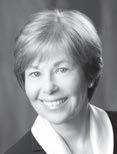
22 American Drycleaner, June 2014 www.americandrycleaner.com
OTHER SIDE OF THE COUNTER
Carolyn Nankervis
with a focus on three areas: empathy toward the customer; knowledge of fabrics and cleaning processes; and problem resolution.
3. Pick a topic and decide who/how/ when to train.
4. Do it. Expect everyone to participate. Those who don’t are given a written reprimand and shortened hours.
5. Explain that they will be tested in real situations at the counter, so practicing beforehand is the only way to be sure they know their stuff.
6. Repeat the process.
We all know some managers and customer service reps will be better at this than others. Pair up those who are less adept at serving customers with those who are grade-A customer service players.
Finally, measure the results:
• Fewer processing issues
• Fewer customer claims
• Increased sales

• Higher mystery shopping scores
All owners have CSRs and managers. Measure their effectiveness! They are the key to improving and growing a drycleaning business.
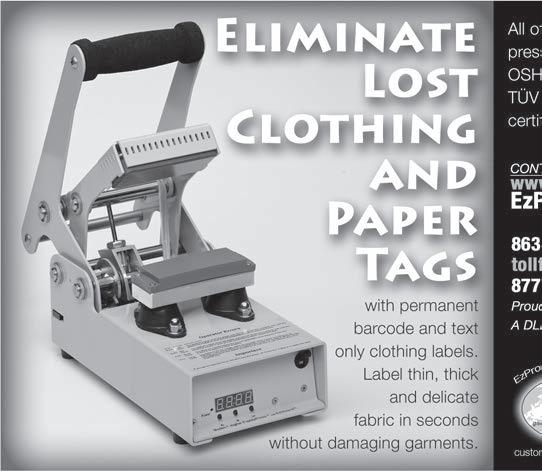
The “best kept secret” is in reference to Dorothy in The Wizard of Oz. She had the ruby slippers all along. All she had to do was use them. O
Carolyn B. Nankervis is president of MarketWise Consulting Group, Appleton, Wis. A former direc tor of marketing, sports writer, radio announcer and TV producer, she is a frequent speaker on customer service and marketing topics. She can be reached at carolyn.nankervis@marketwi.com, 920-735-4970.
www.americandrycleaner.com
23
American Drycleaner, June 2014
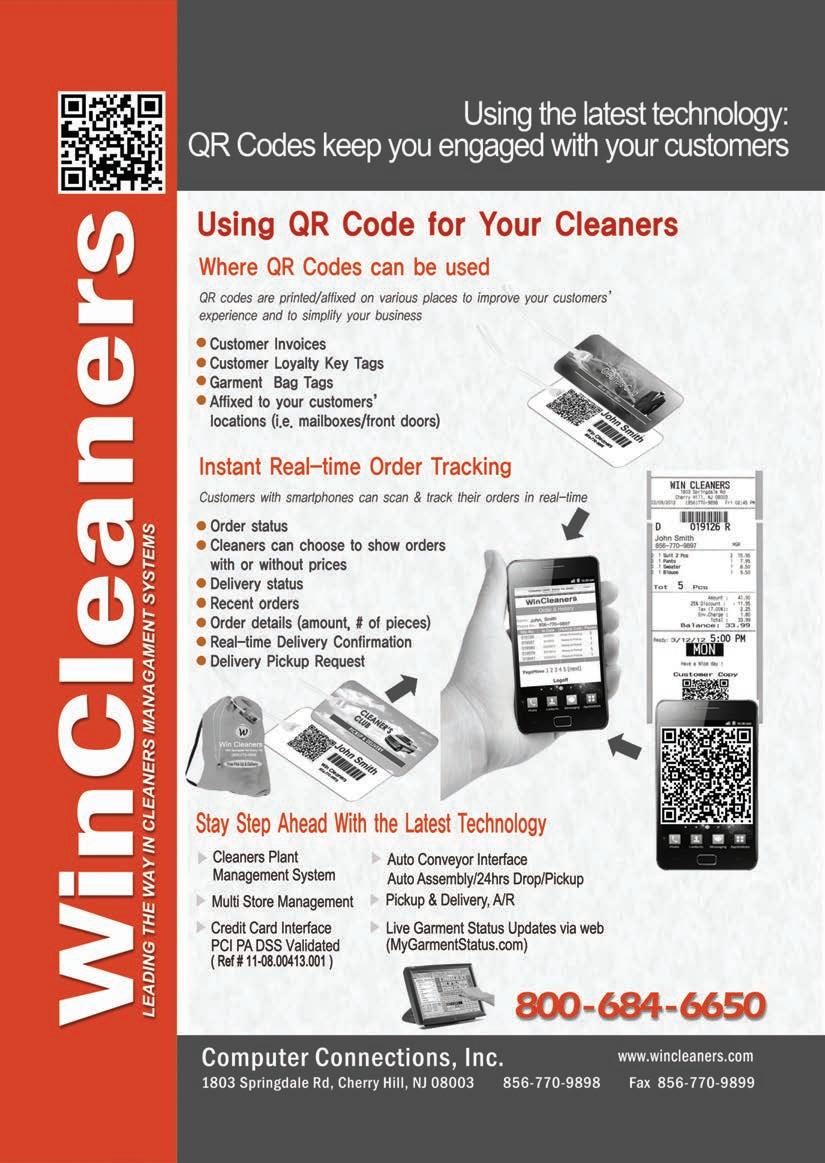

Lot of Little T hings
There is going to come a time when a cleaner/spotter will get themselves into a difficult situation. It may be through aggressive stain removal, a mistake by another employee, poor classification, or poor maintenance.
There is going to come a time when the short-term goal is to get the garment back to its condition when you began the cleaning process. That can be a sickening feeling, accepting that the problem occurred after the garment was in your custody and control. It is your responsibility. It is your potential claim.
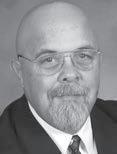
When attempting supplemental stain removal, it is easy to temporarily lose sight of the sensitivity of the fabric and dye. This sensitivity varies from garment to garment, depending on the fiber content and construction.
The tensile strength of a silk fabric, for example, is greatly reduced by moisture. Mechanical action applied to the stain must be drastically reduced to avoid chafing the area. Chafing is the breaking of the small fibers in the yarn resulting in the area appearing lighter than the original color.
Many times, this chafing can be camouflaged by making up a mineral oil bath—10 ounces of mineral oil to a gallon of hydrocarbon—in a container
that allows for free movement. Saturate the garment for about a minute and then extract lightly. Dry as normal.
Allowing the fabric to soak for longer periods may allow the mineral oil to accumulate in the seams, which will result in them looking darker than the garment. Mineral oil can be applied to small areas with a powder puff, then feathered to the outside to level the color intensity. Diluted mineral oil works well on any fabric in which chafing has occurred.
The solution of another problem in stain removal is much simpler but must be taken quickly. There are times when the dye will be sensitive to the pH of the chemical tool used in stain removal, and this sensitivity will result in localized color change. Many inexperienced cleaners have allowed garments to go out after they thought they had “knocked out the color.”
When faced with this reaction, immediately flush the area with steam while applying the opposite chemical: neutralize tannin with a protein, neutralize protein with tannin. This is the reason that chemical tools must be flushed out before proceeding to the next chemical tool; leaving tannin in the garment and applying protein because it is the next thing to try only reduces the effect of both chemical tools.

www.americandrycleaner.com American Drycleaner, June 2014 25
SPOTTING T IP S
▲
Martin Young
Whether it is lipstick or ink, the same sinking feeling occurs when you open the door of the machine and see the marks on a load of customer’s clothes. Look over the garments, and hope that the damage is isolated.
Reclean the garments to remove as much of the stain as possible. If you have the capability, add a quart of POG to the wheel and run for at least 15 minutes, without circulating the solvent. This “batching” should reduce the number of damaged garments.
Treat the remaining spots on the dry side with POG, then reclean. The remaining damaged garments should be spotted on the wet side, first with NSD, then tannin, then protein and, finally, spotbleached with sodium perborate. At this point, any remaining damaged garment that can tolerate water should be soaked in a sodium perborate bath. It comes down to doing what is necessary to prevent a claim.
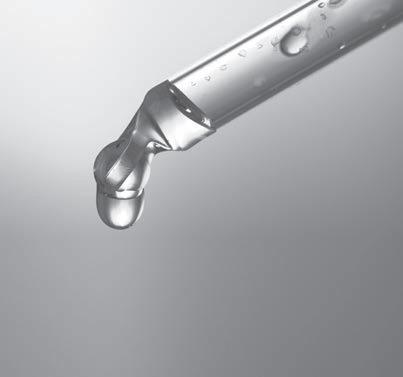
It is important to classify garments into the proper grouping for dry cleaning. A
American Drycleaner, June 2014
bulkier item will take longer to dry than a sheer silk or rayon. The result is usually a lightweight item with streaks and swales from rubbing against the still-damp gar ment. This can be corrected by spraying the streaked item with a leveling agent to break down the streaks and swales in recleaning.
Even more serious is the dark item that makes its way into a light or pastel run and leaves dye streaks on some of the garments. Recleaning the damaged items will help significantly but some may require a reducing bleach to remove the last traces of fugitive dye.
The No. 1 problem caused by cleaners is redeposition. It is also the easiest to prevent.
Do not introduce garments to the drycleaning system when they are still damp from wet-side spotting. Maintain solvent clarity by properly caring for the filtration on the machine and by adequately distilling your solvent. A new problem I am seeing is choosing to keep the base tank at less than 50% of capacity, which only allows the concentration of NVR in the solvent to rise.
Redeposition can usually be corrected by the use of POG at the spotting board, or by batching POG in the drycleaning wheel. This is not a good situation, but it comes down to doing what is necessary to prevent a claim.
Good, consistent cleaning is not one particular thing. It is a lot of little things that string together to form an effective system. O
Martin L. Young Jr. has been an industry consultant and trainer for almost 20 years, and a member of various stakeholder groups on environmental issues. He grew up in his parents’ plant in Con cord, N.C., Young Cleaners, which he operates to this day. Contact him by phone at 704-786-3011, e-mail mayoung@vnet.net.
26
www.americandrycleaner.com
(Photo: © iStockphoto/Romanchuck)
The No. 1 problem caused by cleaners is redeposition. It is also the easiest to prevent.
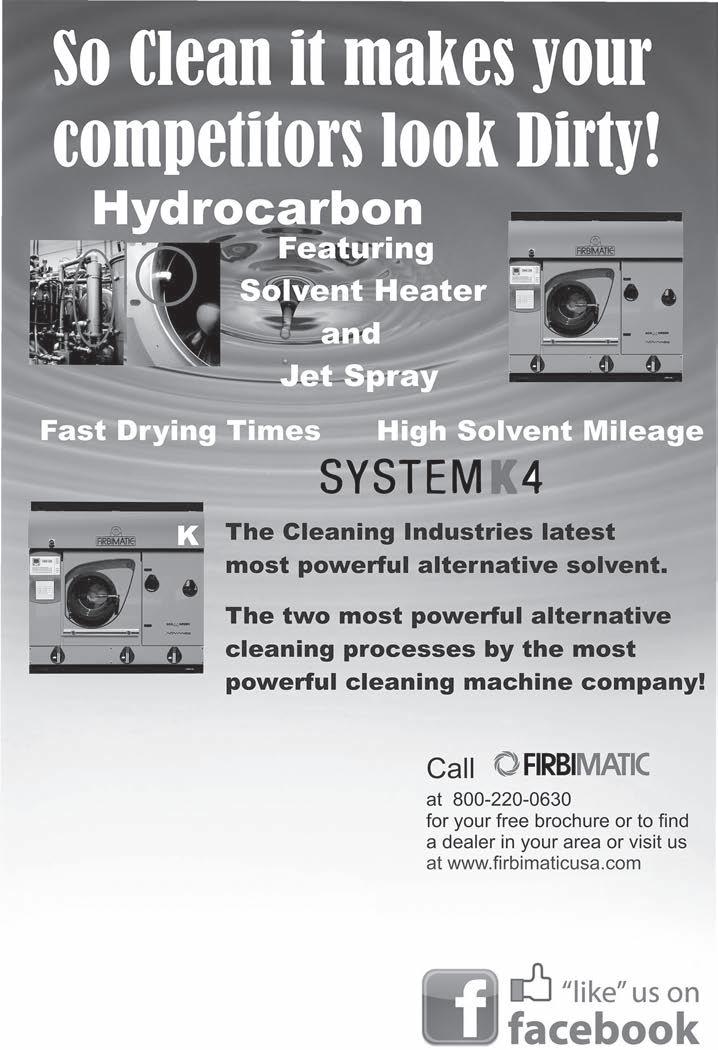
Hercules Machinery, Inc. 21 Alabama Avenue Island Park, NY 11558 Phone: 516-889-0088 Fax: 516-889-7161 Email: joepres21@aol.com
Attitude


28 American Drycleaner, June 2014 www.americandrycleaner.com
Publishing)
(Images licensed by Ingram
Check
How to turn negative workers into positive performers
By Phillip M. Perry
Do your employees play well with customers? Do they engage with the public in ways that spark business and promote loyalty to your dry cleaner?
In the best of worlds, you would always answer “Yes.” Fact is, though, every business has some employees who have a tendency to look on the dark side of things—a habit that can create negative interactions with customers. And even the sunniest workers have bad days. The cause might be a perceived snub from a supervisor. Or maybe it’s a marital crisis or a financial issue.
Whatever the reason, the result is the same: a grumpy employee who alienates customers. And that means lost sales and lower profits.
Negativity can take many forms, such as these examples:
• James speaks to another employee, bad-mouthing a customer who just left the store. (Worse still, another customer overhears his remarks.)
• You overhear Margareta say to a customer, “Management really stinks here.”
• Andre says, “It’s not my job,” when asked to help out a customer who needs a special service.
ACT QUICKLY. All of those events—and others like them—can alienate customers and dent your bottom line. That’s why it’s important to take action before matters get worse.
“Quick attention is essential in dealing with negative behavior,” says Ian Jacobsen, a management consultant based in Morgan Hill, Calif. “Issues that are allowed to fester can grow out of proportion and become the impetus for still more negative behavior.”
An employee who is not confronted about undesirable workplace activity will assume the practice is acceptable, notes Jacobsen.
Moreover, because “one bad apple spoils the bunch,” destructive behavior can spread to other workers. Soon, your highperforming employees will start to get frustrated because they have to pick up the work left by the slackers.
Finally, as destructive attitudes spread, you may start to be viewed as a manager or owner who cannot handle challenging employees.
GATHER DATA. Acting fast is one thing. But just what should you do? Start by engaging with the employee involved. “Take the employee aside and describe exactly what you have seen or heard,” says Jacobsen.
Here’s an example of such a description, based on a supervisory response to the first of this article’s opening scenarios: “James, I heard you talking with Amy about one of our customers who had just left the store. You stated that the
American Drycleaner, June 2014 29
www.americandrycleaner.com
▲
customer was ‘a pain in the neck.’ This is inconsistent with what I would expect from you. What was that about?”
Notice that the words reflect the position of an observer who is simply gathering data. Avoid using terms that suggest a value judgment or cast a bad light on the employee’s intentions or motivation. Terms such as “bad-mouthing,” “rudeness” or “negative behavior” can quickly backfire by putting the employee on the defensive. And an employee who is trying to defend actions is not in the right mindset to work with you to resolve behavior issues. “Think of yourself as being like a newspaper reporter just reporting the
Smart supervisors work quickly to address negative employee behavior. Smarter ones create workplaces where negative behavior doesn’t occur in the first place.
“Most employees start the day with good inten tions,” says Richard Avdoian, an employee development consultant from St. Louis. “They don’t get out of bed asking, ‘How am I going to be abusive with customers?’”
Too often, something happens to change that. Your job is to find out what it is, then take steps to resolve the issue so employees become effec tive agents.
If you take time to com municate with them, your best employees will inform you about any workplace
facts,” advises Jacobsen.
Once you have stated what you observed, listen to the employee’s response. “Don’t interrupt,” says Jacobsen. “Instead, wait for a break in the answer and then ask any further questions you need to understand the situation.”
To continue our example, James might offer the information that a few days earlier the customer had changed his mind several times in stating what he wanted from a service the store was offering. The frustration in dealing with the customer had angered James. As a result, he found himself letting off steam when dealing with that customer again.
GOIN G POSITIVE
issue that is affecting per formance. Sometimes, it’s a new policy. Other times, it’s inaction on a chronic problem. Or maybe a mis communication about an important topic.
Supervisory sessions are critical, says Avdoian. “Meet regularly with employees to touch base.”
Ask questions such as these: “What is working in the workplace for you? What isn’t? Are you strug gling with anything? Do you need additional training?”
These questions com municate that you are here to guide and mentor the employee—not just to dis cipline, says Avdoian. “You can be a parent, mentor, or just a wise person who can shed light on problems.”
Some supervisors resist such meetings because
they think they take up too much time, but they can be as short as 15 minutes.
Avdoian also suggests holding periodic “best practices” meetings, dur ing which employees share with others what works and what doesn’t in their daily interaction with your dry cleaning customers.
In all cases, value employees who speak up.
“Courageous employees will express what is both ering them in an effort to make life better,” says Ian Jacobsen, a management consultant based in Morgan Hill, Calif. “Others are afraid to say anything. They just stew and express their frustrations to anyone they don’t consider a threat. So treasure those who express their concerns in a spirit of problem-solving.” O
American Drycleaner, June 2014 www.americandrycleaner.com
30
Upon learning this, you have already gone a long way toward resolving the problem. Your data gathering has uncovered what is affecting James’s behavior: a short fuse when it comes to difficult customers.
Once the employee has explained what happened, summarize what you have heard to demonstrate that you understand. Then ask if your summary is accurate. If not, ask for further clarification.
The next step is to get the employee invested in a self-generated solution so the behavior does not recur. “Once the employee affirms that your summary is accurate, ask how the situation could have been handled better,” advises Jacobsen.
Using this example, you might say something like this:
“James, I realize that some of our customers can be demanding in terms of service and time. It’s not OK to say something like what you said about them, and the matter was made worse because another customer overheard what you said. How could you have handled this better?”
James might come up with a solution like counting to 10 or taking a quick walk around the store when feeling the urge to blow off steam.
“If the employee suggests a better way, and it is acceptable, go for it,” says Jacobsen. “He has come up with a way to solve the problem.” And that’s good—compliance will be better if the employee agrees to a self-generated solution rather than one imposed by the boss.
If the employee can’t think of a
www.americandrycleaner.com
better way, then explain how you would like the situation handled in the future and ask if he or she can do that. In the example with James, you might suggest that the individual speak with you or a supervisor after dealing with a difficult customer, because talking about bad experiences can reduce their negative effects.
If an employee’s behavior has been serious enough, you may wish to confirm what has transpired in writing and provide a copy to the worker.
And don’t forget your follow-through.
“There is an old adage: ‘If you expect, you’ve got to inspect,’” says Jacobsen. “Check back from time to time to see if the employee has adopted the desired behavior. If so, commendation is in order. If not, take the person aside again and repeat the above process.”
You might also agree with the employee on a day to follow up, and mark your calendar so it doesn’t fall through the cracks.
COACH, NOT DICTATOR. Notice an important characteristic about the above approach? It represents the work of a coach, not a dictator.
“Do not be heavy-handed; do not use more muscle than necessary,” says Dr. Lois P. Frankel, a partner at Corporate Coaching International, Los Angeles. “In the old days, managers would say something like this: ‘I have to tell you that if I hear of this behavior again, your employment may be jeopardized.’ That was ▲
American Drycleaner, June 2014 31
Get the employee invested in a self-generated solution so any unacceptable behavior does not recur.
considered progressive. But not anymore. Today, you want to turn around the situation with the least disruption.”
Helping people improve their performance can also make the corrective process more palatable for the boss.
Helping people improve their performance can also make the corrective process more palatable for the boss.
“Too many bosses don’t have these difficult conversations because they are seen as confrontational,” says Frankel. “Replace that confrontational cap with a coach cap. Tell yourself this: ‘My job is to bring out the best in people and make a company that is well functioning.’”
IMPROVE CONDITIONS. Your data-gathering activity may uncover a surprising fact: an underlying problem in the workplace needs to be addressed. This issue may be causing negative feelings on the part of other employees as well.
“When the performance or attitude of a good employee starts to deteriorate, that can be a sign that something is going wrong in the workplace,” says Richard Avdoian, an employee development consultant from St. Louis. “You want to find out what it is—and nip it in the bud.”
Let’s take our second scenario from this article’s opening. Why did Margareta say what she did about management?
During your data-gathering discussion described earlier, Margareta may tell you something like this: “We used to have flex time and they took that away last month.”
Your response should acknowledge both the issue and your desire to meet the employee’s needs. You might say some-
thing like this: “I kind of feel the same; I wish that had not gone away. But let’s talk about how your needs can be met.”
While your workplace might not be able to offer flextime, it might be able to offer individuals a little more leeway in adjusting schedules to meet family needs. Changes that arise from coaching sessions can modify the workplace in ways that benefit all employees and result in great customer satisfaction.
TOUGHER ACTION. Of course, this article has been examining the occasional negative actions of good employees. Persistent negative behavior requires tougher action. “If the behavior is persistent, then there must be accountability,” says Avdoian.
Consider the third entry in this article’s opening scenarios. Andre, who said that a requested service was “not my job,” needs to be reminded that “We’re all in this together” and that every employee has to be ready to pitch in with duties that may well be outside of the parameters outlined in a job description.
The coaching procedure outlined in this article should help Andre come around to a better attitude. If not, then the only remaining option is to refer to your organization’s progressive disciplinary measures that lead to termination. O
Award-winning journalist Phillip M. Perry, who re sides in New York City, is published widely in the fields of business management, workplace psychol ogy and employment law, and his work is syndi cated in scores of magazines nationwide.
American Drycleaner, June 2014 www.americandrycleaner.com
32
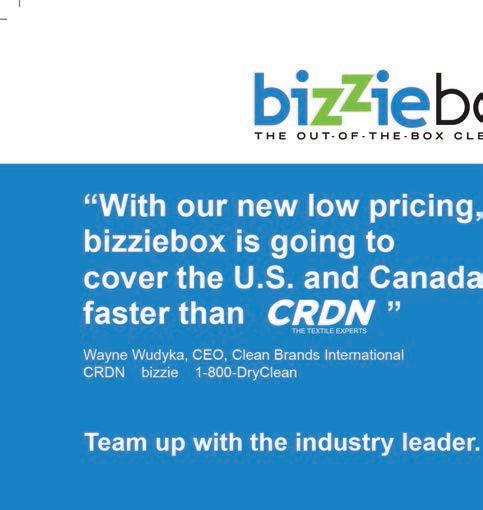
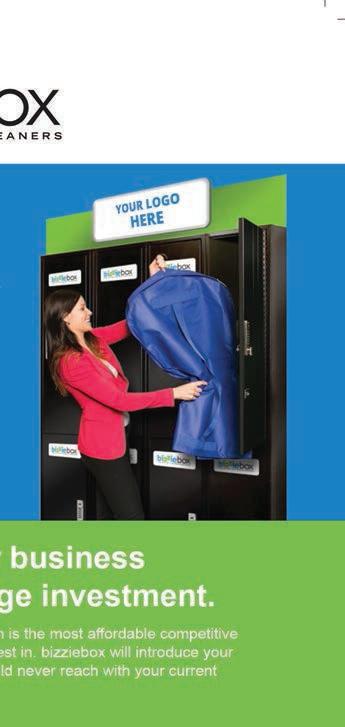
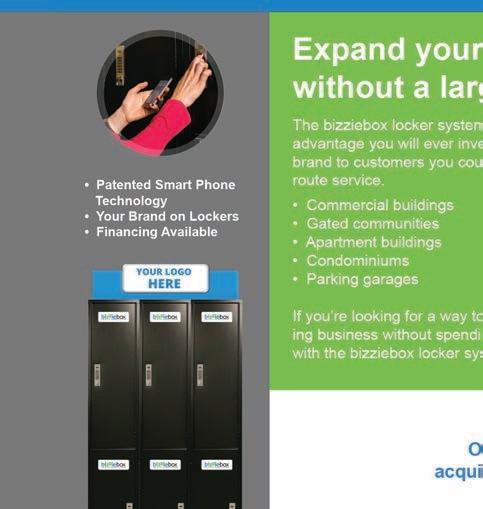
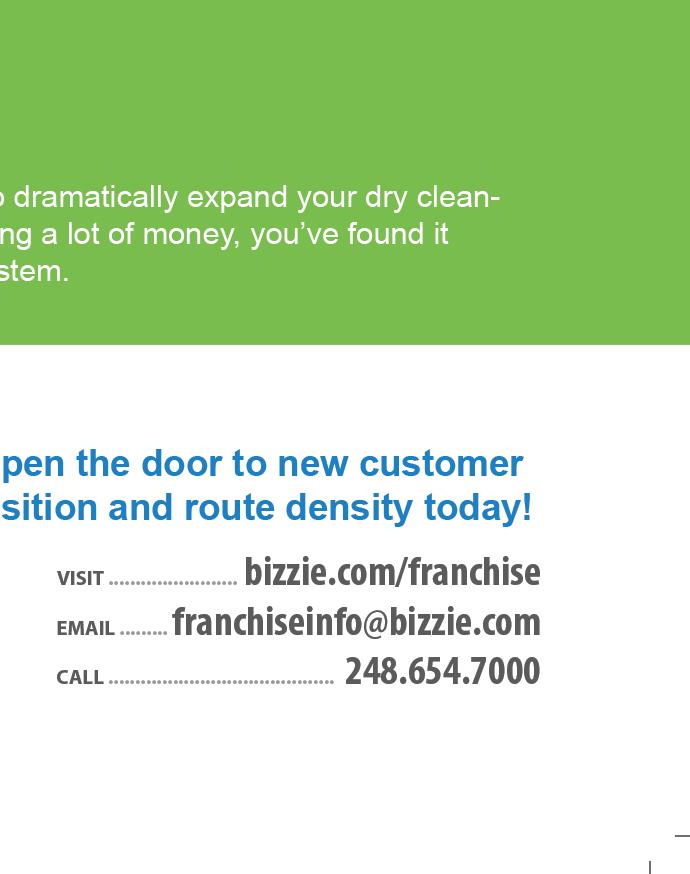

Hits the Spot
KC dry cleaner believes climate is right for spot cooling
By Jimmy Barry Jr.
“High energy” is a great trait in our colleagues and ourselves, but bad news for our balance sheets. After managing drycleaning operations these past 25 years in the Midwest, South Carolina and Florida, I’ve learned that utilities are typically our third high est expense behind labor and rent. With summer here, it’s a perfect time to share how we reduced our cooling costs nearly 50% while gaining happier, more productive team members.
First, some history. My grandfather opened his first dry cleaner in Kansas City in 1967 and added nine more stores. My father acquired them in 1982 and sold them to a larger company before helping run their 470 North America stores. In 1999, Dad started GreenEarth Cleaning, which created groundbreaking technology that Procter & Gamble used to open its first Tide Dry Cleaners store near Kansas City in 2008. I bought it in 2010 and now own four franchise stores.
Two of the stores came with conventional HVAC (heating, ventilation and air conditioning) systems that have extensive ductwork and large compres sors. They’re similar to the AC systems in many homes.
In the two newest facilities, I in stalled spot cooling systems that use
aquatic chillers; this makes the technol ogy extremely efficient. A decade ago in Florida, I used an earlier version of this system, and the American-made technol ogy has improved since then.
To simplify financial comparisons, let’s look at two of my plants that are similar in size and function. One has HVAC cooling the entire building. The other has spot cooling that blows dehu midified, filtered air where employees want it at their workstations.
Savings from spot cooling ranges from $1,000 to $1,300 each month. Plus, my team members are happier and more productive (which I’ll detail later).
Energy bills are only part of the cost related to a cooling system. There are also hardware acquisition, installation and maintenance costs. In our first store, cooling 3,500 square feet with HVAC required 35 tons of compressor capacity and extensive ductwork. Including in stallation, the system cost approximately $100,000.
Our spot cooling system uses 20 tons of compressor capacity, although 10 tons would have been sufficient. We doubled that capacity because we’re running two 80-pound cleaning machines that each require 10 tons of chiller capacity to operate. If their chillers ever go down, we flip four ball valves so chilled water from our spot cooling system keeps
34 American Drycleaner, June 2014 www.americandrycleaner.com
ENERGY REPORT
work flowing. It’s a great backup that ensures 100% uptime for our drycleaning operations. Installed cost for the spot cooling system was roughly $48,000.
Experience, numerous studies and common sense prove that comfortable colleagues are more productive and stable.
Unlike HVAC systems that recycle air, our system continuously brings in outside air, even during the hottest days of summer. The air is filtered, dehumidified and cooled or warmed as necessary by the large, high-efficiency water cooler on our roof. Team members have complete control over the air’s direction, velocity and temperature at their workstations. We can even use the condensate from the chiller to water our lawn.
The bottom line is, spot cooling only cools team members at their workstations, whereas HVAC systems cool an entire building. The latter requires a lot more capacity, energy and maintenance since compressors are constantly turning on and off to regulate temperature and humidity.
Think of it this way: A nice jacket comes into your store with a single spot that needs to be cleaned. It’s less expensive and more efficient to fix that spot instead of the entire garment.
Do team members care? When I ran stores in Florida, it was common for employees to start disappearing at the height of summer. After installing a spot cooling system, that was no longer a problem. Scientific research helps explain why.
Published studies from Finland’s Laboratory for Heating Ventilating and Air Conditioning, and the Lawrence Berkeley National Laboratory, Environmental Energy Technologies Division, in California have shown
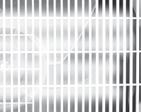
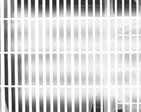
www.americandrycleaner.com
workplace performance increases with temperatures between 69.8 and 71.6 F.
The Occupational Safety and Health Administration’s (OSHA) Technical Manual recommends workplace temperatures between 68 to 76 F, and humidity between 20% and 60%. Temperatures higher or lower than those ranges hamper productivity.
Hiring, training and retaining team members is a significant expense. Yet even though experience, numerous studies and common sense prove comfortable colleagues are more productive and stable, the majority of drycleaning plants still have little more than exhaust fans.
It’s difficult working in a sauna, yet that’s what it’s like in many plants, particularly during summer. In our plants with spot cooling systems, we have had zero employee turnover in 31/2 years, saving us thousands of dollars and hundreds of man-hours. Plus, everyone’s a lot happier.
Because many drycleaning operators have no ductwork to remove or equipment to replace, installing a spot cooling system would be relatively easy.
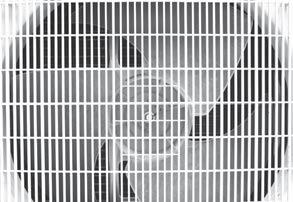
Although my fellow Missourian Mark Twain wrote, “Climate is what we expect, weather is what we get,” spot cooling has enabled us to control the climate around our team members, which they love. Lower energy bills and extra backup for our drycleaning machines haven’t been bad, either. O
Jimmy Barry Jr. employs 50 full-time team members as owner/operator of TDC of Kansas City. He can be reached at JamesBarryJRTDC@yahoo.com, 913-905-9429.
American Drycleaner, June 2014 35
(Image licensed by Ingram Publishing)
Plant Leasing
Tips... and Traps to Avoid
 By Lloyd R. Manning
By Lloyd R. Manning
When drycleaning plant owner/ operators rent their store-plant space, the haunting questions focus on the considerations that should be taken into account prior to entering into a longer-term rental
agreement or perhaps renewing an existing lease.










Selecting an appropriate space from which to profitably conduct business should be a meticulous procedure, far more than just finding an empty spot where the rent is cheap, signing a lease agreement, making a




36 American Drycleaner, June 2014 www.americandrycleaner.com
Look before you lease—it’s all subject to negotiation
few improvements and then moving in. Overlooking seemingly insignificant considerations could spell disaster.
THE LEASE—ASSET OR LIABILITY? The wellnegotiated space lease is a valuable asset while one that contains negative clauses could be a liability.
Many entrepreneurs have signed rental agreements for terms longer than they thought they had. The watchword is: “Look before you lease.” Look at the location, the amenities, the neighbors, the covenants and, most importantly, the rental in relation to the business and profit you can generate from this location. Do they work for you, or only the landlord?
Not every for-rent commercial space, no matter how attractive or economical, is suitable for a drycleaning plant. Determin-

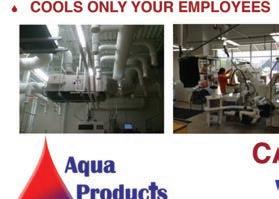
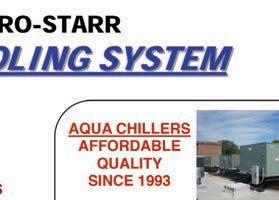
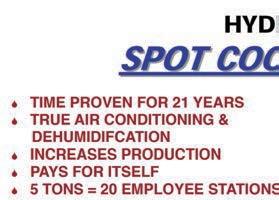
ing whether you are location-dependent or -independent is important.

If location-dependent, you rely on the immediate neighborhood for patronage. If location-independent, as say for a plant that draws its customers from pickup and carryout depots, you rely on a larger market base, not a specific neighborhood. In the first instance, location, visibility and accessibility are ultra-important. With the location-independent, although accessibility is important, location for itself means little.
Before signing, examine your potential market, its source and whether the location of your plant is better here rather than there. Consider your neighbors and if they generate patronage for you. Compare various locations, their estimated drawing power, and your total occupancy cost ▲
www.americandrycleaner.com
37
American Drycleaner, June 2014
for each as a percentage of the projected gross income.
KNOW YOUR ECONOMIC RENT. A common opinion is that rental agreements are presented with most terms and conditions spelled out and offers one of two choices: take it or leave it. Not true!


Everything is subject to negotiation. The most important rental factor is not the asking price, but the potential patronage you can generate from the location, which denotes what you can afford to pay and be profitable.
Low-rent spaces may not be that cheap when you look at the bottom line. Alternatively, a high rent may not be exorbitant if your net profit can be increased pro rata.
guidelines and benchmarks are skinny and unreliable.
The best procedure is to estimate your income for each location being considered, individually, then deduct all expenses except rent but including a fair wage for yourself. From the remainder, deduct what you believe would be a fair rental amount and compare it with your net profit hurdle rate (this is the minimum acceptable percentage) and the landlord’s asking price. How do they stack up?
MAKE COMPARISONS. Determine how much space you really need. Although you do not wish to be crowded, there is no point in paying for excess space. The object is to attract the largest patronage at the lowest cost.
Always, the first price is what the property owner would like to have. This leaves you to determine what he/she will settle for. There are two considerations to be taken into account: “market rent” and “economic rent.”
Market rent is based on what similar rental spaces were recently leased for, or their asking price, your rental rate adjusted for its superiorities or inferiorities, such as location, amenities, condition, utility, lease terms, etc. To determine market rent, you need to find similar “For Rent” spaces and make comparisons.
Economic rent, the more important criterion, is a fair and reasonable rental amount that is based on your projected income and profit margin. Unfortunately, industry statistics that will provide
It may only be a choice of this or that, but best as possible project your income and expenses—including rent and profitability—for alternative locations. Include the cost of any improvements you must make. Then compare.
Low-rent spaces may not be that cheap when you look at the bottom line. Alternatively, a high rent may not be exorbitant if your net profit can be increased pro rata. Perform a sensitivity analysis: project both income and expenses at varying levels—optimistic, most probable and pessimistic—for different locations with differing lease rates. Determine your breakeven point for each potential location. The “optimistic” is hoped for, “most probable” should support the rental rate, and “pessimistic” is the worst-case scenario.
TYPES OF LEASES. There are usually three types of leases with which to be concerned: the “gross lease,” the “net lease” and the “parol lease.”
American Drycleaner, June 2014 www.americandrycleaner.com
38
▲

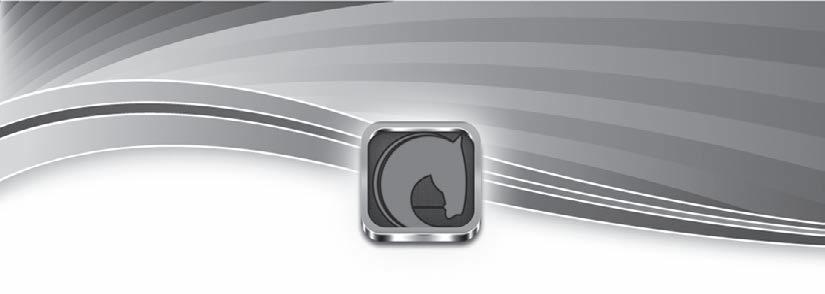

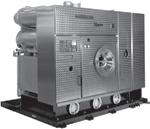
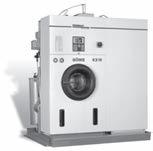
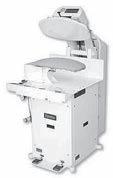

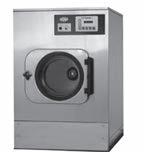
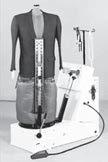












Multimatic 30-lb. SL-30 $18,500* Forenta Dry Cleaning Topper (used) $3,600* Form Finisher $3,250* Forenta A19VS Topper $3,895* Huebsch 75-lb. Steam Dryer $3,700* Lattner 20hp Boiler $11,900* Milnor 60-lb. Washer $6,450* Bowe 40 Hydrocarbon Machine $28,500* New & Used Equipment for Drycleaning & Laundry Huge Selection of Parts for Most Brands of Equipment Prices valid until July 1, 2014 | *Freight Not Included MUSTANG enterprises 1/2” Steam Traps $35 each, 5 trap minimum 86 6 - 73 4 - 364 4 Monthly Specials Online: MustangEnterprises.com
With the gross lease, the only additional occupancy cost is utilities, and perhaps maintenance. With the net lease (aka “triple net”), all property operating costs, such as building insurance, taxes,
repairs, utilities, etc., are added to the rent; if a multi-tenancy property, it is your share based on your occupancy percentage of the whole.
A trap for the unwary: gross leases ▲
LEASING COMMER C IA L S PA CE
Leasing commercial office space is one of the largest expenses incurred by new and expanding businesses, says the U.S. Small Business Administration, so it is impor tant to do your due diligence. Here are some tips from the SBA for negotiating a com mercial lease for your small business:
LEASE AGREEMENT. Lease term and rent are your first negotia tion points. It is generally rec ommended that small busi nesses negotiate one- to twoyear leases with the option to renew. You will also want to factor in rent increases over the term, and renewal options so you are not charged with an unexpected rent increase without warning.
Consider working with a broker to help you negotiate with the landlord. It is also important to consult a knowl edgeable real estate lawyer; they can often recommend the right choice for you and protect your interests as you negotiate your lease through the broker.
EXPENSES. In addition to your monthly lease payment, find out what expenses you may incur beyond rent.
Commercial real estate landlords often incorporate extra expenses such as maintenance fees, upkeep
for shared facilities (Common Area Maintenance, or CAM), etc. Other expenses to consider are utilities. These charges are usually the responsibility of the tenant, so find out how these are measured. Are they individu ally metered or apportioned by square footage? Ask to see these “hidden fees” and policies as well as examples of costs that are typically incurred by tenants.
MAINTENANCE AND REPAIR. While residential leasing often places the burden of maintenance and upkeep on the shoulders of the landlord, commercial leases are dif ferent. Commercial leases vary regarding maintenance and repair – some stipulate that the tenant is responsible for all property upkeep and repairs while others specify that the tenant is responsible for systems like air condition ing, plumbing, etc.
READ THE LEASE. Be sure to read over your lease in detail and hire an attorney who specializes in commercial real estate to walk you through the clauses and fine print.
PROTECT YOUR BUSINESS. To protect your investment and long-term business interests, it is worth investigating and negotiating some potential
add-on clauses to your lease. These might include:
• Sublease – This builds in some flexibility, allowing you to sublet your space to another business.
• Exclusivity clause –Prevents the landlord from leasing other spaces on the property to a direct competitor of yours.
• Co-tenancy – If the property’s anchor ten ant closes business, a co-tenancy agreement can protect you from a potential loss of cus tomers, allowing you to break the lease if the landlord does not replace the anchor tenant in a specified time period.
WHAT IF YOU DEFAULT? Should you default on your lease payments, there are steps you can take during the lease negotiation process to protect yourself. Find out what the lease agreement states. Will you be locked out immedi ately? Will the landlord initiate eviction proceedings? Can you negotiate more time? Could you pay only the cur rent month’s rent instead of the remaining amount owed on the lease? O
Source: U.S. Small Business Administration (www.sba.gov)
American Drycleaner, June 2014 www.americandrycleaner.com
40
There’s more than one way to access the industry’s number one magazine.
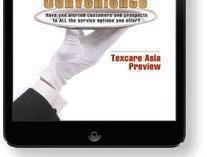

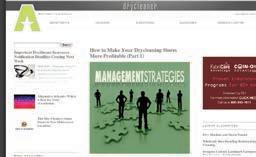

Besides our print edition, don’t forget that our tablet and mobile versions and website are great ways to stay on top of the latest industry news and updates. www.americandrycleaner.com
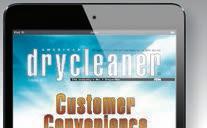
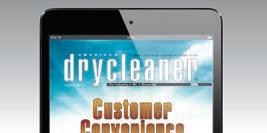
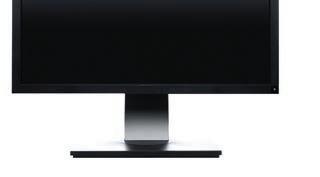




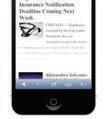
© Copyright 2013 American Trade Magazines All rights reserved. ® September 2013
and Print!
Website Tablet Mobile ...
often contain escalator clauses whereby as the cost of taxes, insurance, etc., increase, your rent also increases proportionately.
The parol lease (an oral lease that is legally enforceable) is usually a gross lease with a month-to-month tenancy. That is, you could be out at the end of the next month. Percentage leases are rare in drycleaning plants, but a landlord may try you on for size. By this, after a stated annual revenue is obtained, the landlord receives a percentage of all additional income.
OTHER CLAUSES. Be certain that the right to transfer or assign the lease is contained in the agreement, and, if the lease is assigned, any prepaid rent is yours, not retained by the landlord. This is a common trap. Many leases contain the clause by which prepaid rent is the landlord’s to keep.
Most leases contain a clause by which all interior improvements become a part of the building. Although installed at your expense, as title passes to the lessor, you cannot remove them; if selling your plant, expect a purchaser to buy these improvements. Although you paid for them, they are not yours to sell. Haggle over this one to your benefit. (A point in passing: If you cannot amortize the cost of the improvements during the first lease term, either their cost or the rent is too high.)
Start-up rental holidays, fixture and
HERE’S WHAT’S COMING UP IN AMERICAN DRYCLEANER...
Want to send a press release or submit a story?
Contact Bruce Beggs, editorial director, today! Phone: 312-361-1683
E-mail: bbeggs@american trademagazines.com


JULY
Feature: Plant Automation Bar codes, RFID chips and automated conveyor systems are taking the hassles out of inventory control and assembly. Here’s how today’s plants are using these innovations to cut labor and maximize efficiency.
AUGUST
Feature: Distributors Directory Continuously updated, our easy-to-use annual directory issue lists distributors of equipment and supplies nationwide.
Editorial Submission Deadline — June 15




SEPTEMBER
Feature: Marketing: Back to Basics How to attract more customers using some tried-and-true promotional strategies.
Editorial Submission Deadline — July 15
Editorial Submission Deadline — May 15 ...and much more!

42
American Drycleaner, June 2014 www.americandrycleaner.com
Negotiate the length of lease based on your comfort level. If your drycleaning plant is a sure winner at a low rental cost, go for a longer term...
move-in allowances are common. Most property owners expect to contribute two or three months’ rent to induce a tenant. So much depends on how badly he/she wants you in and how long the property has been vacant. A step-up clause that provides for a low initial rent, then periodic increases, may seem benevolent. Most only let the tenant in gently, then soak it later.
Negotiate the length of lease based on your comfort level. If your drycleaning plant is a sure winner at a low rental cost, go for a longer term; if uncertain, the shorter. Either way, always include one or two renewal options.
Remaining are several standard and specific-to-a-particular tenancy clauses. The point is, before signing, pore over and negotiate each separately, considering its effect on your plant’s operation, income
and profitability. Never assume that, when first presented, all terms and conditions are engraved in stone. So much depends on the negotiating skill of the parties.
Finally, look before you lease. You must live with it for a long time. If the terms do not work for your benefit, your troubles may have just begun. O
Information in this article is provided for educational and reference purposes only. It is not intended to provide specific advice or individual recommenda tions. Consult an attorney or real estate profes sional for advice regarding your particular situation.
Lloyd R. Manning is a semi-retired commercial real estate and business appraiser, and a freelance writer based in Lloydminster, Saskatchewan. He is the author of Winning With Commercial Real Estate – The Ins and Outs of Making Money in Investment Properties
www.americandrycleaner.com
American Drycleaner, June 2014
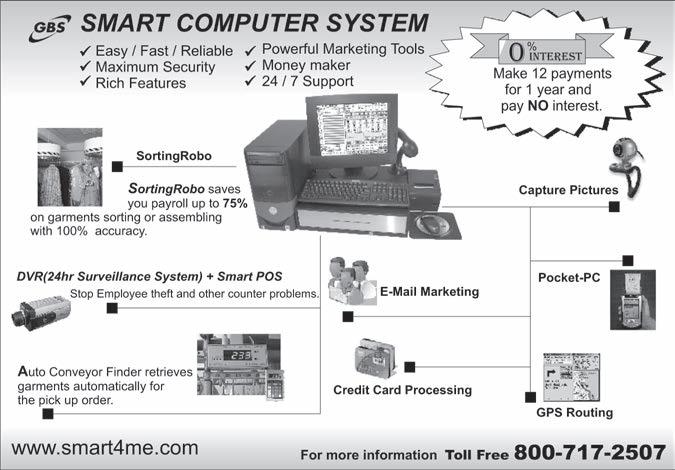
43
INDUSTRY OBSERVATIONS
S pot-Check Y our Counter S taff
Three recent incidents lead me to believe that you are losing money at the counter.
A friend and I have breakfast every week at a coffee shop and the bill comes to $12. One week when we ate there, the waitress handed us a bill for $6.50. After trying to figure out what she did, we finally paid our bill and walked out.
At a “big box” store, I purchased an item for $11.42. I handed the clerk a $10 bill and a $5 bill and dug out of my pocket 42 cents, expecting to receive an even $4. Instead he handed me a $5, thinking that the change meant he owed me a fiver.
At a dry cleaner, I handed the counter staffer a $20 bill to pay a $14.25 invoice, and she refunded me $8.75.
Must be the new math. Maybe it’s that some high school graduates never really learned basic arithmetic and can’t count. Or maybe it’s that these employees just don’t care, and are going through the motions of doing their job. “What’s the big deal? Hand out a ten, hand out a five, hand out a one—it
To find past columns from Howard Scott or share this month’s with your colleagues, visit www.americandrycleaner.com.
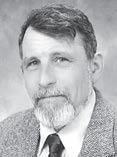

means nothing to me. Besides, the boss is a real jerk,” goes the mindset. Whatever the reason, watch out. You might be losing money out of your front counter.
This is unfortunate, because there’s no reason there should be an unwarranted outflow. You have proper procedures. You have an up-to-date computerized register. You have checks and balances. But, you also have staffers who just aren’t paying attention.
When I owned a business, often at the end of the workday, around 7 or 8 p.m., I would review my 150 invoices and wonder if and where money was trickling out unintentionally. It was all paper I was dealing with, and I made sure enough stuck so I was able to pay the bills and pay my 17 employees their salaries, but I felt that there could be leakages.
So I sat there, in the semi-darkness, thinking about leakages in the system. If an invoice was lost, money was out the window. If items weren’t included in the billing, money was out the window. If there were arithmetic mistakes, money was out the window.
If an employee was taking cash out of the register, money was out the window. If a staffer was stealing stock, money was out the window. I would
44 American
June 2014
Drycleaner,
www.americandrycleaner.com
Howard Scott
envision my business as a Rube Goldberg contraption from which money could be dripping out of any of a half-dozen points or more.
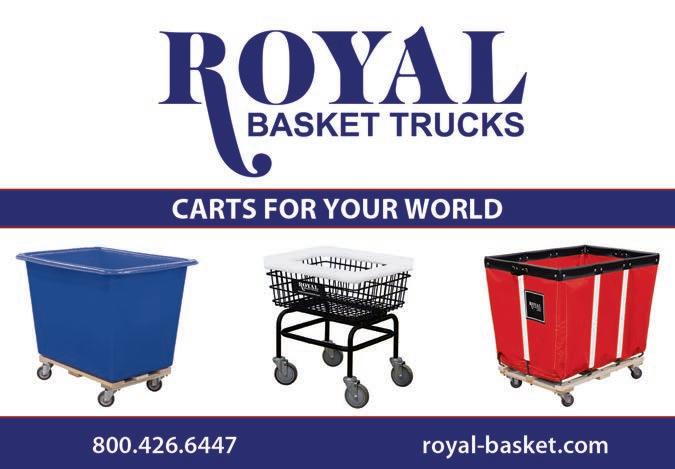
If you do not use a computerized system that provides complete control, be especially vigilant.
A year after I sold my business (and was relieved of the constant worrying), a former supplier of mine declared bankruptcy. He told me his bookkeeper had bled him dry, stealing $4 million over 10 years. While I’d like to think I would have caught that one, I understand how unwarranted outflows occur and are often aren’t detected until it’s too late. All this was be-
fore the computer, but leakages are a fact of life in American businesses even now.
So watch out. Spot-check your staffers. Without being obvious, observe the money transactions over the counter. When you hire a newcomer, review his/her math skills. If there is some deficiency, provide a remedial course to improve skills. Never, ever assume it is being done correctly. As the examples I’ve described show, there will be surprises.
If you do not use a computerized system that provides complete control, be especially vigilant. There is little control that the staffer is charging correctly, taking in the money accurately, and handing out the correct change. There is little control between staffers. There is little backup documentation to make a case against pilferage. At the end of the day, you ▲
www.americandrycleaner.com
45
American Drycleaner, June 2014
INDUSTRY OBSERVATIONS
have some money in the till, a tape, and you pretty much assume accuracy.
But even if you have a fully computerized system that tells the staffer how much to give the customer, there could be mistakes. At the end of the day, if there is a $25 discrepancy between the computerized figure and the actual tally, most dry cleaners would ignore the discrepancy. This is a mistake. When you find a discrepancy,

spy” to go to his six stores, where she makes transactions and files reports on the findings. On these visits, the mystery shopper deliberately tries to trip up the counter person by handing the staffer paper plus change, trying to make conversation, and questioning invoices.
Another dry cleaner employs cameras trained to go close up to the transaction. From his office, the dry cleaner can beam
(Image licensed by Ingram Publishing)
his/her side of the transaction. Maybe the staffer did hand the customer a $1 instead of a $5 as you perceived. If you can do a register spot-check, do so. The first check is not to scold the counter staffer but to show that you are watching, that you are paying attention to every transaction. But if this becomes habitual practice, then you must take action.
Of course, if you find a staffer who has pilfered register money, you have no option but to dismiss the person. Giving a second chance will not change human nature. Overlooking the theft because of the person’s other contributions shows
your too-lax management style. Setting up stronger controls will only encourage the offending employee to be clever in his deceptions. Above all, remember that dishonesty is a lack of character, and it is hard to break that weakness.
You can’t tolerate theft in your business. But inattention, sloppiness, lack of focus, and carelessness are also unacceptable. Insist that your people handle each transaction accurately, and spot-check to make sure that they are doing so. It might be only $5 a day in mistakes, but that amounts to $1,500 a year you didn’t receive. That’s a serious leakage. O
Howard Scott is a longtime industry writer and drycleaning consultant, and an H&R Block tax preparer specializing in small businesses. He wel comes questions and comments, and can be reached by writing Howard Scott, Dancing Hill, Pembroke, MA 02359, by calling 781-293-9027 or via e-mail at dancinghill@gmail.com.
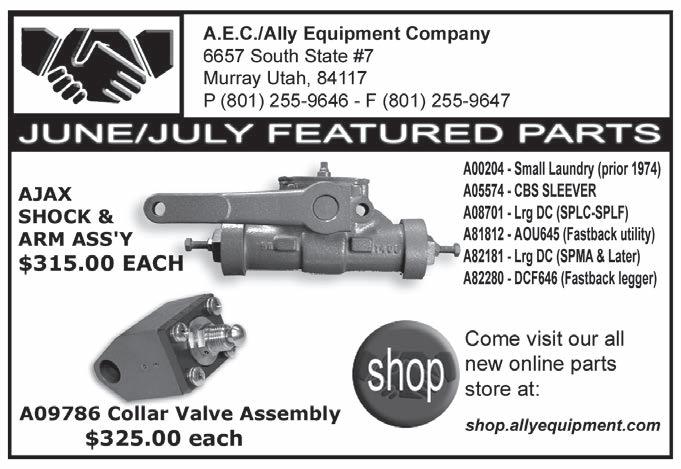
www.americandrycleaner.com American Drycleaner, June 2014 47
You can’t tolerate theft in your business. But inattention, sloppiness, lack of focus, and carelessness are also unacceptable.
Avoiding Claims: What You Need to Know About Fabrics & Stain Removal. NCA course, to be held June 7 in Dallas. Call 212-967-3002 or e-mail ncaiclean@aol.com.
Basic Spotting. NCA course, to be held June 22 in Bronx, N.Y. Call 212-967-3002 or e-mail ncaiclean@aol.com.
One-Day Stain Removal with Introduction to Bleaching. NCA course, to be held June 29 in Miami. Call 212-9673002 or e-mail ncaiclean@aol.com.
Avoiding Claims: What You Need to Know About Fabrics & Stain Removal. NCA course, to be held July 13 in Seattle. Call 212-967-3002 or e-mail ncaiclean@aol.com.
DEC Certification. Two-day NCA course, to be held July 13 and July 20 in Nanuet, N.Y. Call 212-967-3002 or e-mail ncaiclean@aol.com.

Introduction to Drycleaning. DLI course, to be held July 14-18 in Laurel, Md. Call 800-638-2627 or visit www. dlionline.org.
Wet Cleaning. NCA course, to be held July 20 in Ohio. Call 212-967-3002 or e-mail ncaiclean@aol.com.
Advanced Drycleaning. DLI course, to be held July 21-Aug. 1 in Laurel, Md. Call 800-638-2627 or visit www.dlionline.org.
Finishing with Tensioning Equipment. NCA course, to be held July 27 in Secaucus, N.J. Call 212-967-3002 or e-mail ncaiclean@aol.com.
Wet Cleaning. NCA course, to be held Aug. 3 in Tampa. Call 212-967-3002 or e-mail ncaiclean@aol.com.
Radical Drycleaning/Stain Removal. NCA course, to be held Aug. 4-8 in Northvale, N.J. Call 212-967-3002 or e-mail ncaiclean@aol.com. O

48
American Drycleaner, June 2014 www.americandrycleaner.com
Post your organization’s education and training course announcements (subject to approval) on www.AmericanDrycleaner.com in four easy steps: 1. On the home page, click “Calendar” 2. Click “Add an Event” 3. Type details into form (must be a registered user; site registration is free) 4. Click “Save” (Image licensed by Ingram Publishing)
EDUCATION & TRAINING




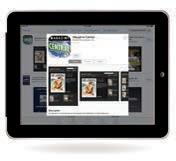
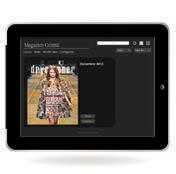
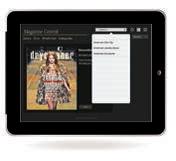








Download Magazine Central and read American Drycleaner on your iPad or Android Tablet Step 1: Go to your App Store and type Magazine Central into search bar Step 5: Click Download Step 3: Open the Magazine Central App Step 2: Click the box to install the app (you won’t have to do this again) Step 6: Click View Step 4: Type American Drycleaner into the search bar Step 7: Read & enjoy! The app stays on your tablet. Check back monthly to download the latest issue.
Caddy Corner
A product for sorting hangers developed by Dura-Cast Products is now available as part of the company’s laundry and linens line of products.
The Dura Hanger Caddy was originally a hanger-sorting solution for a major theme park and resort, but Dura-Cast is now looking to expand distribution to any industry that works with hangers, includ ing hotels and dry cleaners.
The hanger caddy was designed to contribute to safer work environments by preventing hanger tangling and protrusion, and other causes of snags and cuts.
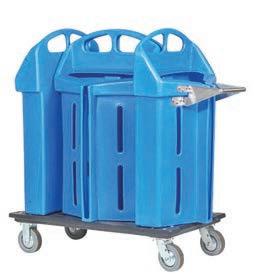
Available configurations include storage for 500 to 2,000 hang ers, and the company says it can customize the product for larger, more recognized chains. www.duracast.com | 800-683-4116
Under Control
Continental Girbau has unveiled the new ProfitPlus™ vended control—now standard on all ExpressWash™, MG- and M-Series Wash er-Extractors. The ProfitPlus Control is also available as an upgrade kit for older-model ExpressWash, MG- and M-Series Washers.
The ProfitPlus Control—which works seam lessly with card technology or coins—brings more washing options and cycle features to the customer, along with added programmability, the company says.
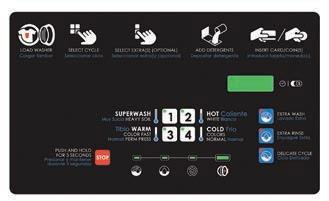
ProfitPlus offers primary cycle options for heavy soils; whites; colorfast and permanent press items; and colors. It also allows the customer to add an extra wash, rinse and/or delicate cycle.
It features graphic icons, accompanied by English and Spanish text, that clearly indicate operational instructions. Customers simply load washers, select the cycle, select extra op tional cycles, add detergent and insert a card or coins.
It offers four individually modifiable programs that allow programmability of G-force ex tract, mechanical action, wash temperature (by degree), water levels and wash/rinse/extract time in each phase. The control’s flexibility allows multi-level vend pricing on the same ma chine depending on the wash program selected, time of day, or day of the week.
www.continentalgirbau.com | 800-256-1073
50 American Drycleaner, June 2014 www.americandrycleaner.com
PRODUC T NEWS
Looking for Companionship?
Hamilton Engineering believes its EVO Companion water heaters offer the ideal water-heating solution for any laundry.
The compact water heaters require a minimal foot print, the company says, and are ultra-efficient, at more than 99%. There is no flow restriction, and the heaters will not limit the hot water supplied as tankless water heaters do, according to Hamilton Engineering.
The EVO water heaters feature a 10-year warranty that includes the heat exchanger and tank.
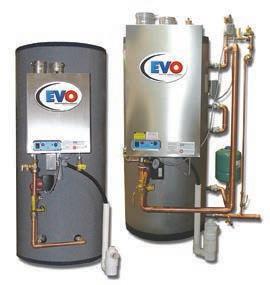
If a business is in an area of poor water quality, and suffers from scale build-up, the Indirect Companion may be the ideal solution, the company says, because the machine heats scale-forming water without the risk of developing scale build-up and the loss of efficiency that comes with it.
www.hamiltonengineering.com | 800-968-5530

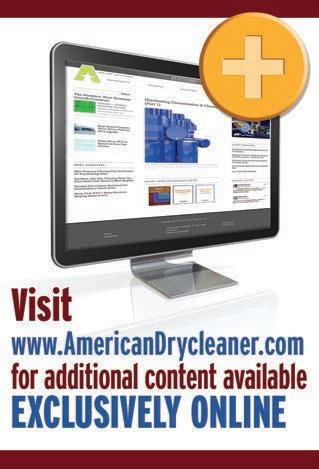
51
www.americandrycleaner.com American Drycleaner, June 2014
The Beauty of Dividends
For many stock market investors, the rise and fall of stock prices is their primary concern—a narrow viewpoint that overlooks the all-important overall performance. In order to determine the true yield of an equity investment, the effects of dividends must be included, and this is where many investors miss the boat.
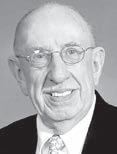
Dividends are an extremely impor tant part of equity investing; they can make the difference between merely doing well and building true wealth. When analyzing investment returns on equities, one oft-overlooked factor is the amount of overall perfor mance attributable to divi dends. According to registered investment advisers Ibbotson Associates, more than 40% of the stock market’s total return of an annualized 9.9% since 1926 is attributable to divi dends. Remove dividends, and the return falls to 5.5%. In 2013, dividends paid by companies included in the S&P 500 in dex increased returns by more than 19%. Obviously, the extra returns generated by high-dividend yields amounts to a lot of money over a period of time. That’s why the beauty of dividends should be an important part of your ap proach to equity investment. A dividend yield is the percentage that a stock yields in dividends per year. You can calculate
this yield by dividing the total dividend paid per year by the stock price. As stock prices fluctuate, so will the dividend yield.
WHAT ARE DIVIDENDS? When a publicly traded company earns a profit, it must decide what to do with that money. In general, it has three choices:
1. Reinvest the money in the company to promote growth.
2. Offer to buy back shares on the open market.

3. Share the profits with investors by declaring a dividend payable on a quarterly basis.
Often, the management of companies whose philosophy is based on rapid growth will decide to keep the money and use it to promote growth. Others prefer to share the profits with their investors by declaring a dividend.
DIVIDENDS INCREASE OVERALL STOCK RETURNS. It is these dividends that must be taken into consideration when consid ering stock investments. Of course, divi dends alone, as with stock price alone, are only a part of a stock’s value as an investment. Before investing in any stock, it’s important to do your research. Look for stocks that are fundamentally sound, generate positive cash flow and offer the possibility of higher prices and higher dividends in the future.
52 American Drycleaner, June 2014 www.americandrycleaner.com Y OUR M ONEY
Bill Lynott
THE POWER OF DIVIDENDS. Shrewd dividend investors are well aware of the easy-to-over look power of dividends:
• Unfortunately, history has shown us that behind-the-scenes manipulations such as questionable accounting methods can be used to falsely increase the market price of a stock, but a dividend can’t be faked. Dividends are real money, and a company cannot pay out money that it doesn’t have.
• Dividends offer some protection in a down market. When stock prices are falling, dividend-paying stocks become more attractive. As a stock price falls, the dividend yield effectively increases. This can result in a sort of floor in the stock price, which in turn can help to avoid panic selling and the resulting capital losses.

• Dividends suggest a friendly attitude on the part of company executives toward shareholders. Once a company develops a record of regular dividend payments, management will be reluctant to cut or eliminate it.
• Dividends are often a signal into how company management expects the future of the company to look like.
Of course, building a portfolio solely around the highest-yield stocks would be a poor investment strategy. Not all high-yield ing stocks make good investments. That’s why it’s so important to examine the funda mentals of each company before you make a decision to buy or sell a stock.
The most important factors in evaluating a company’s potential are:
• Its long-term growth and financial prospects.
•
• Apparent ability to increase its dividend
payments
over time.
• Management’s relationships with investors.
Unusually high yields are usually the result of a perception on the part of investors of unusually high risk. A 7% yield would be of no value if the price of the stock drops by 20%. What matters is the change in price plus dividends received, not the dividend alone.
Dividend investing is a strategy for inves tors, not traders. Long-term dividend invest ing can be an excellent choice if you are a conservative investor looking for excellent growth over the long term. While it doesn’t necessarily provide the instant excitement of short-term investing and day trading, it does provide for a more stable investment strategy. When it comes to long-term investing, Warren Buffett is arguably its most success ful proponent. When asked how long he expects to hold a stock once he has bought it, Buffett replied: “Forever.” O
Information in this article is provided for educational and reference purposes only. It is not intended to provide specific advice or individual recommenda tions. Consult an accountant or tax adviser for advice regarding your particular situation.
Bill Lynott is a freelance writer whose work appears in leading trade publications and newspapers, as well as consumer magazines including Reader’s Digest and Family Circle. Visit his website at www. blynott.com or e-mail blynott@comcast.net.
June 2014 53
www.americandrycleaner.com American Drycleaner,
(Photo: © iStockphoto/Gunnar Pippel )
In Memoriam
Albert “Al” Jordan, Fabritec
International
Albert “Al” Jordan, founder of Fab ritec International, died May 5 in Naples, Fla., reports his son, John, president of the company.
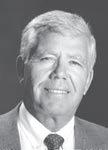
After serving in the U.S. Navy in World War II and re turning to earn his bachelor’s degree from Miami University, Jordan was hired as Sanitone junior engi neer in 1951. (Emery Industries was the parent company of Sanitone, located in Cincinnati.) He was given territories servicing dry cleaners in Tennessee and later Chicago. He earned the posi tion of sales promotion manager in the “heyday” of Sanitone National Ad vertising, later becoming general man ager of the division and, finally, vice president of the Drycleaning Products Division.
As business turned down sharply in the 1970s, Jordan guided his division through difficult times to be spun off as Fabritec International. He bought the company in 1980 and constructed a brand-new headquarters and labora tory research facility to keep Sanitone innovative and unique.
“Al loved his industry friends and some competition,” son John recalls.
“He enjoyed the trade shows and seminars, especially the New England Sanitone meeting. He was proud of his Japanese friends at the Hakuyosha Co. Always a great storyteller, Al had an ecdotes and motivational talks for his employees, especially the new hires. Stemming from his love of football and coaching, he always had words of encouragement for customers, and was a mentor for younger generations.”
John Jordan called his father “the leader in defending our industry and promoting the value of dry cleaning and ‘protecting your wardrobe invest ment.’”
Al Jordan is survived by his wife of 38 years, Marcia; three children, Carolyn, Deborah and John, and their spouses; six grandchildren; and two great-grandchildren. The family planned a private service.
An obituary published in The Cin cinnati Enquirer indicates memorials may be made to the Salvation Army, 114 East Central Parkway, Cincinnati, OH 45202, or to the Wounded Warrior Project, P.O. Box 758517, Topeka, KS 66675.
FRSTeam recognizes top performers at annual awards gala
FRSTeam recently named its 2013 top performers at its Recognition Awards Gala, presenting the Licensee Leader
AROUND T HE I NDUSTR Y 54 American Drycleaner, June 2014 www.americandrycleaner.com
Al Jordan
Award to Tom and San dy Ustanik of FRSTeam by Lansing Cleaners, Lansing, Ill.; and the President’s Award to Ron Patrie of FRSTeam of North and Central Georgia, the company reports.
The Licensee Leader Award recognizes “allaround excellence and performance” among FRSTeam licensees, the company says, select ing the Ustaniks and FRSTeam by Lansing Cleaners for the award for its “exceptional service record.”
A member of the FRSTeam system since 2006, FRSTeam by Lansing Cleaners also received the Top Sales Leader distinc tion for “having the highest sales volume” in 2013, the company adds.
“We take great pride in providing the highest level of service to our custom ers across all of our stores,” says Sandy Ustanik. “It’s gratifying to be part of the FRSTeam family and to be recognized with this year’s top honor.”
“We congratulate this year’s Licensee Award recipient team for their outstand ing demonstration of excellence in textile restoration, as well as their unwavering commitment to FRSTeam core values,” says Jim Nicholas, president of FRSTeam.
In selecting Patrie and FRSTeam of North and Central Georgia for the Presi dent’s Award, the company praised the team’s “continued commitment to, and practice of, the FRSTeam tenets of family, integrity, responsibility, satisfaction and technology.”
www.americandrycleaner.com
The President’s Award honors li censees who exem plify passion for, and support of, the company’s brand and ideals, according to FRSTeam.
“I’m honored to accept the Presi dent’s Award,” says Patrie. “It be longs to everyone at FRSTeam of North and Central Georgia. What our team does best is love customers. FRSTeam’s value system and our success come from putting that into action every day.”
Other 2013 top performers recognized at FRSTeam’s awards gala include:
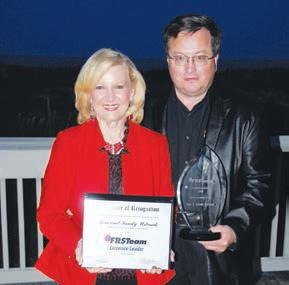
• Top Jobs Growth Award – FRSTeam by Westbank Dry Cleaning, Austin, Texas
• Top Jobs Leader – FRSTeam by Custom Commercial, Hayward, Calif.
• Sales Growth Award – FRSTeam by Custom Commercial, Denver
• Top Sales Growth Percentage Award – FRSTeam of Houston, Houston
• Operations Superstar – Teddy Aspros of FRSTeam of New England, Stoughton, Mass.
• Service Superstar – Christian Cook of FRSTeam by Paris Cleaners, Portage, Mich.
• Sales Superstar co-winners – Tyler Martin of FRSTeam by Custom Commercial, and Logan Blackburn of FRSTeam by Westbank Dry Cleaning
• FRSTaid Survey Superstars –FRSTeam by DKS Dry Cleaning
American Drycleaner, June 2014 55
▲
FRSTeam by Lansing Cleaners owners Tom and Sandy Ustanik won the franchisor’s Licensee Leader and Top Sales Leader awards for 2013.
Restoration, Parma, Ohio, and FRSTeam by Rogers Orlando, Orlando, Fla.
Generational Expert headlines CRDN International convention
Nearly 300 attendees from the U.S., Can ada and the U.K. convened recently for the Certified Restoration Drycleaning Network’s (CRDN) biennial International Convention at the Arizona Grand Resort & Spa in Phoenix, matching the organiza tion’s record attendance, CRDN reports.
Educational sessions and social events filled the three-day convention, featuring “generational expert” Cam Marston, presi dent of Generational Insights, who spoke on the impact that the baby boomer gen eration has in today’s workforce.
“The baby boomers are now the parents of the youngest members of our work place, born since 1980,” says Marston. “The boomers changed parenting methods and added Amber Alerts, No Child Left Behind, and began spending ‘quality time’ with their children. Has this change im pacted the way our workplaces function? Yes, in so many ways.”
Wayne Wudyka, CRDN founder and CEO, says Marston’s presentation “strengthened” the educational materials showcased during the convention. “We were very pleased to host Cam as an in tegral part of our convention. He brought tremendous value and had a significant impact on how we view those inside our business, as well as our clients.”
A black tie awards gala capped the event, where the organization’s leading
franchisees and sales professionals were honored for their accomplishments in 2013, according to CRDN.
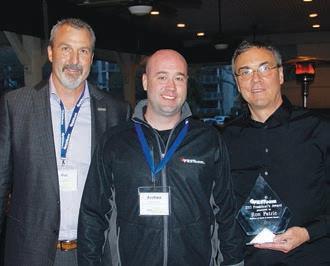
“It’s personally rewarding to see the hard work of our dedicated members ac knowledged in front of their peers,” says Wudyka. “Saluting the achievements of these premier dry cleaners and their teams is a fitting conclusion to a memorable and meaningful time together.”
Feelin’ Great earns $5,000 grand prize in DLI video contest
Feelin’ Great (Dry Cleaning Song), featur ing two well-dressed young men rapping, dancing, and extolling the benefits of hav ing their clothes professionally cleaned by a member of the Drycleaning & Laundry Institute, was the $5,000 grand prizewin ner in DLI’s recent video contest, the Insti tute reports.
In all, 23 entries were received from cleaning professionals, students, and mem
American Drycleaner, June 2014 www.americandrycleaner.com
56
FRSTeam President Jim Nicholas (left) presents the President’s Award to FRSTeam of North and Central Georgia owner Ron Patrie (right) and sales representative Joshua Campbell.
bers of the general public. Entries were capped at two minutes and could not promote a specific business; to qualify for the contest, each video had to log at least 100 views. DLI members voted on their favorite videos, and the Board of Directors selected the winner from finalists suggested by the membership vote.
Second place went to The Magical Dry Cleaners, and #FreshPress finished third, with each earning $100.
“This program improves the image of our member dry cleaners because it show us as a modern service that is an important part of people’s lives and a necessary component to leading a happy and successful life,” says contest creator Dave Beatty, owner of Murrysville (Pa.) Cleaners, and DLI’s District 2 director.
“The more cleaners who embrace these videos and put them on their websites, Facebook, Twitter, Pinterest, and e-mails, etc., the more successful the program will become,” Beatty says. “We have more than 20 videos so everyone can find something they like and share.”
At press time, the winning videos and other entries could be found at www.dli online.org/contest.

Cleaner’s Supply taps NetSuite for e-commerce support
Cleaner’s Supply, a distributor of drycleaning supplies, has selected NetSuite SuiteCommerce to “manage and streamline its core business processes and operations across multiple channels, including a call center of 46 sales representatives as well as B2B and B2C e-commerce sites,” NetSuite reports.
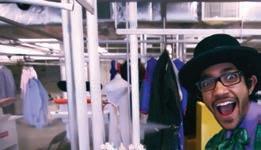
The e-commerce sites include www. cleanersupply.com, which sells drycleaning supplies, and www.wawak.com, which sells tailoring and sewing supplies.
Cleaner’s Supply also plans to rely on NetSuite for sales force automation, customer support, customer service and marketing automation, NetSuite says. The Conklin, N.Y.-based company realized that its old commerce system couldn’t support its business growth.
“NetSuite is unique in offering integrated e-commerce and CRM that can give us new insights into customer interactions over our websites and call center for better service, targeting and promotions,” says Joseph Dunne, president of Cleaner’s Supply. “We’ll be able to tie our call center sales reps into e-commerce, and rather than having content and pictures in multiple places, be it the back end, catalog or the website, we want the website to be our single repository. Additionally, our agents can experience what our web customers are every minute of every day, telling us how we can improve that overall customer experience.”
Mobile support was a primary driver in the decision to select NetSuite, he says. O
www.americandrycleaner.com
American Drycleaner, June 2014

57
A screen capture from The Magical Dry Cleaners, which finished second in DLI’s video contest promoting dry cleaning.
2014 RATES: One- to five-time rate: $2.00 per word, boldface $2.10 per word. Minimum charge: $25.00 per ad. Call or write for our three- and 12-time rates. If box number is used, add cost of 5 words. Display classified rates are available on
AUCTIONS
Onsite & Webcast Foreclosure Auction: Fri, June 20 Real Estate: 10AM, Equipment: 10:30AM White River Junction, VT 15,000±SF Building with Dock, Public W&S, 0.55± Acre. Equip.: vehicles, dry cleaning & washing machines, steamers, scales, clothing conveyors & belts, Unipress items & MORE! THCAuction.com • 800-634-7653
BUSINESS OPPORTUNITIES
request. All major credit cards are accepted.
PAYMENT FOR CLASSIFIED ADS: Must accompany order. DEADLINE: Ads must be received by the 1st of the preceding month. For example, for a June ad, the closing date is May 1st.
COMPUTER SYSTEMS
Western Wonder Touch $990 (refurbished) $1990 (new) 1-year warranty Perfect for small to medium sized cleaners Various management reports Absolutely reliable, tested systems www.WesternDCcomputer.com 773-878-0150 westernk@msn.com

1-888-275-6637.
1-561-302-5031
New or Refurb as low as $895 58 American Drycleaner, June 2014 www.americandrycleaner.com
COMPUTER SOFTWARE
CONTACT TO PLACE YOUR AD classifieds@ americantrademagazines.com
EQUIPMENT FOR SALE Own Your Own Drycleaners—Managers, Spotters, Tailors, Pressers! 100% Financing. Plant or Drop, location of your choice. Call
or
Blocks and flanges for all types of men’s and straw hats. Sandbag, steam pot and hat spinner. Contact 314-369-8173
Dry
Commercial Building &
Cleaning Equipment
REWEAVING SERVICES

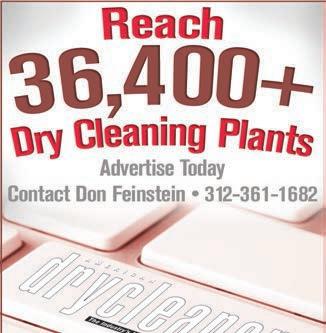
W ITHOUT-A-TRACE WEAVERS— More than 50 years’ experience. We are the experts in silks, knits, French weaving and piece weaving. Reasonable prices. Send garments for estimate to: 3344 W. Bryn Mawr, Chicago, IL 60659; 800-475-4922; www.withoutatrace.com.
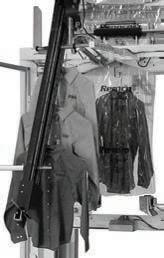
59
www.americandrycleaner.com American Drycleaner, June 2014
EQUIPMENT FOR SALE GARMENT GUARD Bagger improves your bottom line packing single or multiple garments
system reduces labor costs.
cost and inventory with just one stock tubing material on hand.
in the U.S.; backed by customer service support staff for parts and technical assistance.
of up to 8 packages/min. and 5 pieces/pack. PO Box 116 Homer, MI 49245 USA 800-409-5225 www.Rennco.com/gg ™ CONTACT US FOR RRODUCT BROCHURE & VIDEO
Automatic
Less
Made
Speeds
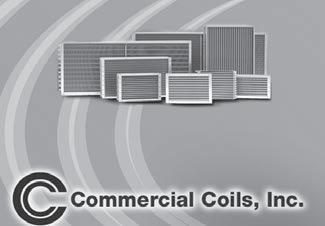
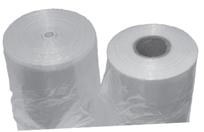


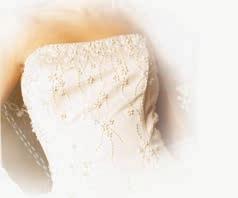
SUPPLIES 60 American Drycleaner, June 2014 www.americandrycleaner.com SUPPLIES 800-532-2645 www.comcoil.com Laundry/Dry Cleaning Coils Steam Or Water Replacements Large Inventory • FASTDelivery SERVICE LEATHER-RICH INC. Since 1977 • High quality cleaning, refinishing & repair Leather, Suede and Fur; in USA and rewards program; FOR MORE INFORMATION: E-mail: leatherrich@att.net Route Service in Upper Midwest www.AmericanDrycleaner.com Call: Bruce Gershon, President www.ArrowLeatherCare.com 800-542-7769 AMERICA’S MOST RECOMMENDED LEATHER & SUEDE CLEANER Call: Bruce Gershon, President www.ArrowLeatherCare.com 800-542-7769 Specialists Wholesale Fur Cleaning Storage and Repair AMERICA’S MOST RECOMMENDED LEATHER & SUEDE CLEANER Call: Bruce Gershon, President www.ArrowLeatherCare.com 800-542-7769 Specialists Wholesale High Fashion Gown Cleaning & Preservation
American Drycleaner and AmericanDrycleaner.com
A WINNING TE AM
E-News Web Print
American Drycleaner is the industry’s premier publication for news relating to drycleaning plants. In it, you’ll find profiles of successful businesses and their owners, tips for running your operation more successfully, expert advice, and much more.
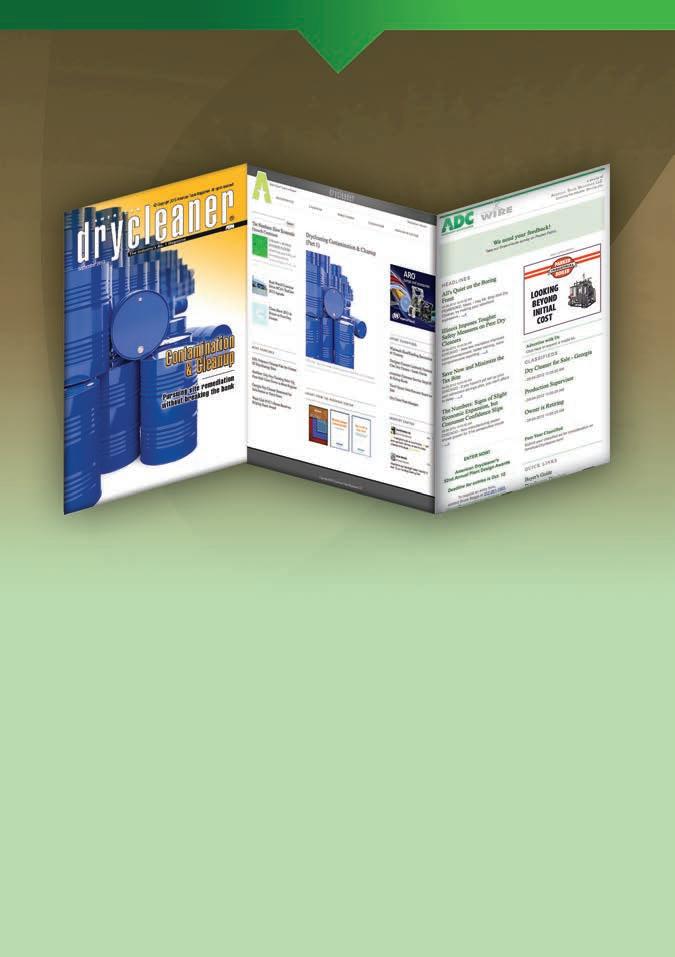
AmericanDrycleaner.com is your one-click site for all of the most up-to-date information on the industry today. Stories are updated daily to ensure you’re always informed. Plus, online tools such as the Distributors Directory and Buyer’s Guide will fulfill all of your plant’s needs.
Drycleaner, June 2014
61
www.americandrycleaner.com American
A.L. Wilson Chemical Co. ............... 1 Ally Equipment Co. ................... 47
Products 37 Arrow Leathercare Services ............. 60 bizzie . . . . . . . . . . . . . . . . . . . . . . . . . . . . .33 Cleaner Business Systems ................ 3 Cleaner’s Supply ...................... 60 Columbia/ILSA BC Commercial Coils ..................... 60 Computer Connections 24 Consorzio Renzacci ................. 19, 51 Dajisoft ............................. 11 EZ Products .......................... 23 Fabricare Management Systems ........... 9 Firbimatic ............................ 27 Global Business Systems ................ 43 Iowa Techniques 5 Irving Weber Associates ................ 17 Luetzow Industries 60 Maineline Computer Systems ........... IFC Mustang Enterprises.................... 39 Parker Boiler Co. .................... IBC Personal Touch Systems ................ 58 QuickSort 13 Rennco .............................. 59 Royal Basket Trucks 45 Scan Q . . . . . . . . . . . . . . . . . . . . . . . . . . . . . .15 SPOT Business Systems ................. 7 Advertiser Page No. Advertiser Page No. 62 American Drycleaner, June 2014 www.americandrycleaner.com
Aqua
Suit-and-Tie...
ads could be successful for another. … Various companies are capitalizing on the warmer summer weather, as two are on the move with new locations and expansions. Ideal Chemical & Supply Co. has opened a branch in Baton Rouge, La., to better serve laundry and textile customers in the area, while R.S. Resource is expanding its facilities in Los Angeles. The additional space will be used to increase equipment and parts inventory, and feature a fully operational laundry and drycleaning plant.
50 YEARS AGO. Ken Faulkner of Faulkner’s Cleaning, Melrose, Mass., has taken his drycleaning services outside the confines of his plant and into customers’ homes, recently making separate trips to help two brides-to-be clean their wedding dresses. One bride had her gown damaged by a greasy iron, while the other’s was met with a spilled bottle of ink. Faulkner worked to make the gowns presentable just in time for the wedding. … Dry cleaners claiming they deal with heavily soiled garments have nothing on what cleaners near the Appalachian coal fields encounter, as many in the area have to run items through one cycle before they can even classify it as a “light” or “dark” garment. While this may seem like a bit of an exaggeration, salesman Ed Martin acknowledges that soil problems in the area are “more aggravated” than elsewhere. … The SlaterWhite plant in San Antonio, Texas, had a presidential duty to uphold, recently pressing President Lyndon B. Johnson’s monogrammed shirts. The shirts were pressed using Ajax presses recently installed at
the plant. Slater-White Supervisor Tom Stuebben says that the President’s shirts were given no special touch-ups and were finished on the same equipment and in the same way all customers’ garments are processed.
75 YEARS AGO. The saying goes that invention is the mother of necessity, and while he may not have invented the common stapling machine, Oscar Churchwell of Yakima Steam Laundry, Yakima, Wash., has a found a new way to use the device in his plant. “To mark pleats on articles requiring wet cleaning, I staple each pleat at the hemline. After drying, all that is necessary is steaming and stretching,” he says, and, of course, to remove the staples and set the marked pleats. … Cleaners processing slacks this summer should take a closer look, as more and more slacks are expected to have zippered flies. Jammed and broken zippers in the cleaning process mean only one thing—the loss of a customer. Before washing, make sure to zip up all zippers, and make note of any broken zippers that come into the shop to avoid facing a claim. Open and close zippers using only the pull-tab, never by pulling the sides apart. Another best practice—do not press the slider, and avoid applying too much pressure, as doing so will leave a shiny line at the left side of the fly. … Enrollment is up at the National Association and Institute of Dry Cleaners, as its 44th class, numbering 25 students, has become the largest since 1930. Students came from all over the country, from California to Delaware, with one student coming in from Sweden. In age, the students range from 19 to 40 years old. O
— Compiled by Carlo Calma
www.americandrycleaner.com
June 2014 63
American Drycleaner,
Continued from page 64
Suit-and-Tie Tuesdays
10 YEARS AGO. After 30 years at its present location in Silver Springs, Md., the International Fabricare Institute (IFI) is on the move, as the organization has made plans to relocate its offices to a new facility in Laurel, Md. IFI CEO Bill Fisher says members will be “excited” to see the group’s new base of operations, which he says will include the “most advanced drycleaning training facility in the world.” Set to take place over the summer, Fisher adds that the process will be a “smooth transition,” and that IFI’s services will be fully active during the move. … Jeans and a comfortable sweater have become go-to options for many on “casual Fridays,” but Jerry Keene, president of Band Box Cleaners & Laundry, hopes to buck the trend by establishing “Dress-Up Tuesday” in Tomah, Wis. To promote the event, Keene placed a newspaper ad featuring himself and a 50% off coupon at any of the company’s four locations. “I hope it sends a wake-up call to corporate America,” he says. …The beginning of the summer is sunny and bright for Mac-Gray Corp., as the company was recently honored by
Maytag Commercial Laundry as its 2003 Marketing Excellence and Top Quota award recipient. “We are flattered to be honored by Maytag and hope it will lead to new partnership opportunities to grow our companies in 2004 and beyond,” says Kevin Fahey, Mac-Gray vice president of sales.

25 YEARS AGO. Attendees at this year’s Clean Show in Dallas may have spotted a futuristic-looking guest roaming the convention floor, as American Permac’s robot, Robot Max, made a special appearance. In addition to wowing guests at the trade show, William Hayday, Permac president, brought Max along with some of the Permac/Bowe team to visit the Children’s Medical Center Hospital in Dallas, bringing gifts to distribute among the children. … The concept of “less is more” rings true for American Drycleaner’s Carter Thurk. Among the reasons why advertising efforts fail for dry cleaners, he says, is that their message is spread over too many outlets. “Your message doesn’t have to be heard by everyone in your market, only those who are really potential customers for your service,” he says, adding that a direct mail campaign, interspersed with radio commercials between mailings, could yield good results for one cleaner, while weekly newspaper
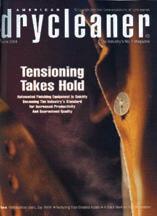
WRINKLE IN TIME 64 American Drycleaner, June 2014 www.americandrycleaner.com
▲ 63 June 2004
Since 1919 Parker boilers have been engineered for more efficient operation (whether gas, oil, or combination gas/oil fired) for delivery of hot, dry steam in less than 10 minutes. And Parker boilers have a longer service life for a greater return on your investment.
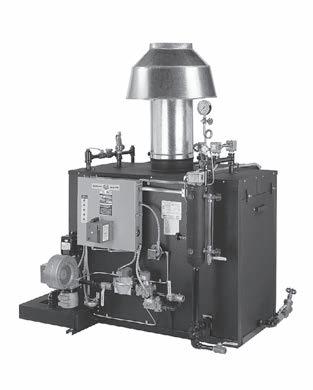
All Parker boilers are delivered complete, ready to connect to utilities. What’s more, every boiler is test fired before it leaves the factory so you can count on getting up and running as soon as possible. Kompact mounted return systems are available on 3 to 25 hp boilers to save on installation costs.
Parker boilers are designed for ease of routine maintenance, annual inspections, and on site repairs, so there is less down time, more reliability. Parker boilers also have extra heavy, insulated, double-wall steel cabinet construction (Stainless Steel available).
All of Parker’s superior quality boilers are available at competitive prices and have been distributed through our regional representatives for over 60 years. Parker
4 REASONS TO CHOOSE PARKER BOILER Parker Boiler Company • 5930 Bandini Boulevard, Los Angeles CA 90040 Phone (323) 727-9800 • Fax (323) 722-2848 • www.parkerboiler.com
ENGINEERED
BETTER
boilers are UL or
listed
and
NOx models are certified to SCAQMD Rule 1146.2 emission requirements. Steam Boilers From 1.5-150 HP Steam Boiler Accessories Feed Systems, Blow Off Tanks, Water Softeners & Chemical Feeders Indirect Water Heaters From 288-2878 Gallons per Hour 100° Rise ermal Liquid Heaters From 126,000 to 6,250,000 BTU Better Engineered 1 Better Designed 2 Better Packaged 3 Better Value 4 For more data circle 65 on Fact Finder Card
ETL
and ASME
NB registered. All our Low
The Ev luti n of Clean

Hydrocarbon
Highlights
• Cleans anything
• Use water freely in spotting
• No static. No chemical odors
• No more lint rolling of garments
• 23 gallons of solvent fills machine
• 10-fold reduced waste stream


• No chiller required. No steam
• Lowest utility consumption of any drycleaning machine
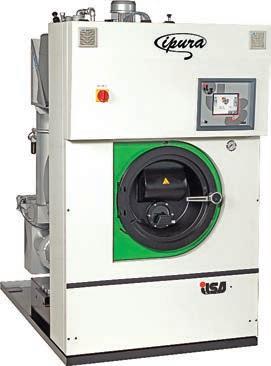
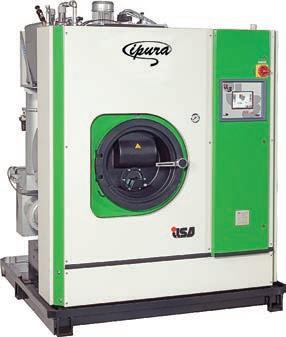
• Solvent mileage between 5,000 and 8,000 lbs. per gallon
• No boltdown. No extraction
• Shortest cycle time in the industry, average 44 minutes
• No springs. No base tanks
• No powder to add. No additives to inject or charge
• Can be operated 24/7/365
• So simple an air quality inspector can operate it
• Available in 40 lbs, and in two footprints
231 Edison Ave • West Babylon, NY 11704 (800)446-5634 • In NY (631)293-7571 www.columbiailsa.com FM Approved
“ there is always ingenuity, passion and determination behind every great machine”








































































































 By Lloyd R. Manning
By Lloyd R. Manning




































































































